THE POWER TO CHOOSE WELL!
WHAT IS INCOMPETENT CERVIX?

WHEN CANCER STRIKES


THE POWER TO CHOOSE WELL!
WHAT IS INCOMPETENT CERVIX?

WHEN CANCER STRIKES

As women, we have a tendency to put our own needs last. But there are times that can jeopardize your health and your future. That’s why NoDrama.org offers eight birth control options, all free or low-cost. With virtual appointments, live chat and prescriptions by mail, it’s never been easier to give your life the priority it deserves.

10The power to choose well 18Chiquita Lockley on the taboo of infertility

58What is incompetent cervix?
64When cancer strikes twice
14
Women of color on the lower end of the health spectrum


22 Facing the challenges of weight discrimination
26 Men’s Health Corner: Suicide Rates Among Black Males

30 Feeling self-doubt or not being worthy? It may be the Imposter Syndrome.
34 What is heart disease and how to fight it?
38 Friend of Foe? Some friendships may not be forever.
45 SCIII Believes: Black women need more black female health practitioners

48 Identifying signs of depression
53 Overcoming and thriving with HIV
75 Achieving weight loss and living healthy

Thank you to my readers and supporters for your unwavering support and encouragement shown to Motivated Woman. This magazine puts a strong emphasis on various issues related to women — their bodies and minds.

The purpose of this magazine is to bring issues concerning women’s health to the forefront and emphasize their importance by voicing these problems through power, motivation and encouragement. The main concept is to never give up when there are challenges, and believe it or not, there have been many who have successfully battled through “unthinkable” circumstances and are now able to tell their stories with bravery.
It is essential for women to acquaint themselves with the contemporary challenges and not be overwhelmed by the hardships. It is my hope that reading through these pages will help women develop the right perspective and put them in the right frame of mind to help them focus on what’s important and how to get through it. In other words, it’s like reading your inner voice but with a touch of positivity to sail you through the problems.
The women sharing their stories in the magazine are those who have suffered an ordeal but were able to pull through by being vocal about their experiences and now want to help others like them. Infertility, cancer, depression, and other such issues are common themes throughout the publication. It’s pivotal to acknowledge that you are not alone in this battle and not succumb to societal pressure or any other such factor holding you back.
It is also extremely important to see yourself as an inspiration and not as a victim. It’s all about developing the right perspective. Thank you again for your support, and I hope you enjoy this issue.
Sincerely,


Editor in Chief Teesa Brunson
Magazine Consultant Cecil Williams
Editorial Manager Delandous Haynes
Sub-editor Jane Collins Ani
Contributing Writers Shakora Bamberg, Tarrah Bonaparte, Megan Freeman, LaToya Johnson, Elizabeth Mosely-Hawkins, Gwynth Nelson, Ryanne Persinger, Jennifer Raskin, Anika Thomas, Carmen Thompson
Photography Rolondo Davis, Deon Brown
Motivated Woman is a leading resource for women’s health illnesses, such as autoimmune disorder, cancer, diabetes, heart disease and obesity. A primary focus of the magazine is infertility. Motivated Woman encourages women to share their remarkable stories of overcoming health challenges they have faced in an effort to inspire and motivate other women who may be battling those same illnesses.


www.motivatedwoman.org
info@motivatedwoman.org
Motivated Woman Board of Directors

Adrian Scott
Anika Thomas
Colletta Brabham Orr
Gwynth Nelson
Jason Barber
Nikki Georgia
Phillip Ford
Shavonne Gaskin
Tarrah Bonaparte
Tia Robinson
Tiffany Goodson
Please visit www.motivatedwoman.org to complete our Magazine Readership Survey

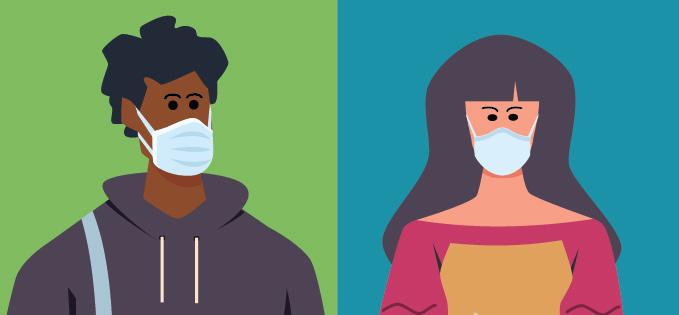


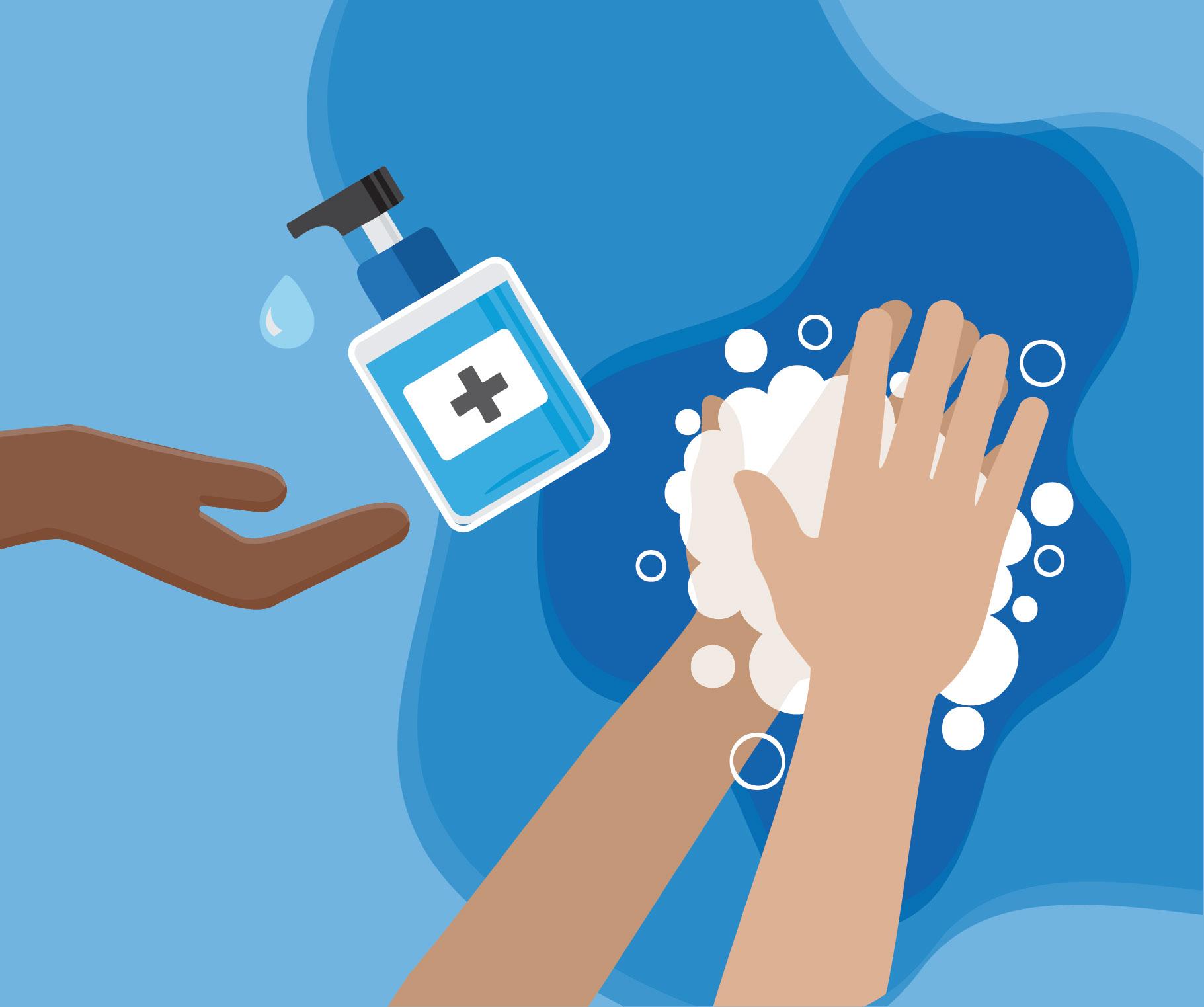

For some young girls and women in South Carolina, access to reproductive care is limited or simply unavailable, leaving them powerless to make the best decisions for their own personal health or the well-being of their family.
One South Carolina organization has served as a beacon of light, illuminating a pathway that has led more than 300,000 women toward choices for better care of themselves.

New Morning, a non-profit organization based in Columbia, S.C., has been working for over two decades to create a healthier Palmetto State by reducing unintended pregnancies through reproductive health education and equitable access to birth control. These efforts positioned the organization to be recognized as the largest statewide birth control access program in the Southeast.
Black women are underserved when it comes to birth control access. The Roe decision could make that worse.
-NBC News
The organization achieves its mission through the signature program, Choose Well. The program’s concept seeks to improve quality of life for women, men and families through the power of choices in contraceptive care. Patients receive access to all FDA-approved contraceptive methods at little to no cost via a network of more than 130 health care center locations across South Carolina.
“When people are able to be a part of the decision-making process for choosing whatever method is going to be best for them, they are more likely to be consistent in using it as prescribed and achieve the goal they are looking for,” said Tiffany Byrd, senior program manager for Choose Well.
When contemplating a decision for reproductive care, Byrd stated, patients are guided by partnering physicians and medical team professionals to consider his or her long-term future, rather than basing their next move on a single moment.
“We want to help them see it’s not just a momentary decision, but that it’s integrated into a larger fabric of their reproductive life plan,” Byrd explained.
It’s this perspective that New Morning hopes will help reduce the number of unintended pregnancies in South Carolina.
More than half of all pregnancies in the state are unintended and is estimated that they cost South Carolina taxpayers more than $79 million each year, adding $195 million to the federal government annually.
While unintended pregnancies impact taxpayers’ wallets, they could have a detrimental impact on household budgets. Quite often unintended pregnancies can further strain a family, whose household income may have already been tight before a baby.
This makes the work of New Morning that much more important
We are truly committed and understand the landscape of South Carolina. Many low-income and uninsured women have not had access to information on family planning and accessing high quality contraceptive services. These women deserve to have the same access as anyone else, even women that are more economically privileged.
and intentional for supporting South Carolina families. Access to choices in contraceptive care helps to break cycles of generational poverty, better positioning women, men and families to choose well.
Ironically, when New Morning first began to transition from a primarily teen prevention program in 2017 to a holistic reproductive care and contraception access program, costly contraception was cited among the barriers to keep patients from integrating them into their daily care routine. Wanting to continue serving as a needbased organization, New Morning focused its efforts to accessibility, thus ensuring equitable access to all FDA-approved contraception, including intrauterine devices and implants, for minimal to no cost.
Getting to a doctor’s office was also recognized as an obstacle to getting birth control. While some parts of South Carolina are witnessing explosive development rates, much of the state remains rural, leaving families without the necessary infrastructure that would support a hospital or doctor’s office in the community. New Morning then kicked into gear in search of establishing partnerships with
healthcare providers that would provide clinical services and contraceptive counseling.
Though now present in 45 of 46 South Carolina counties, Byrd noted that prior to Choose Well, some women lived in counties where no gynecological service providers were in their region. These communities are referred to as medically underserved by the federal government.
To ensure inclusivity for these often-neglected communities, Byrd said, “We work with rural health clinics that have a special federal designation to make sure that we can also equip their staff, give them the training and provide access to a variety of methods. Our work helps make sure they can provide care to the patients that are already seeing them for other services.”
Little River Medical Center, a healthcare system in Horry County, is one such provider. With six medical sites, the one-stop shop for medical care, has served over 11,000 women since joining as a Choose Well partner nearly six years ago.
Reese Smith, LPN, reproductive healthcare coordinator, has managed the program from the partnership’s beginning. According
We have a dynamic partnership that really tries to make sure that no matter which door a woman enters in her healthcare journey, she can access the contraceptive care she needs.
for the best contraceptive method for free or low cost. New Morning has tracked more than 1.5 million visits to the website, nodrama.org, since its 2019 launch.
New Morning is taking advantage of telemedicine, too. During the height of the pandemic, the organization pivoted to offering its services virtually and providing prescriptions by mail.
to Smith, New Morning helped to expand the center’s existing reproductive healthcare services by providing funding to support a dedicated team comprised of one provider and two nurses. The trio travels to five of the center’s sites to provide care.
“The whole idea was to hopefully meet the needs of our community better. We serve a population that is in need, and we serve a huge diverse population, so we wanted to be able to go to them,” said Smith.
“Had it not been for the [Choose Well] grant,” Smith continued, I don’t think we would have been able to reach as many as we have. We have made such a profound difference in the lives of our young people.”
In keeping with the need to remain relevant, yet still impactful, New Morning is also behind the No Drama public service campaign. The campaign is designed to reduce the stress that patients say exist when trying to get birth control. It’s another means of knocking down barriers, primarily using technology.

With a click of the finger on their mobile device, patients can schedule appointments or conduct research
Additionally, New Morning has invested nearly $40 million in grants to support equitable access to contraceptive care and reproductive
health education and distributed more than 208,000 contraceptive methods. As with most non-profits, grants and contributions have been the lifeline which help to sustain the work of the organization.

“We are truly committed and understand the landscape of South Carolina. Many low-income and uninsured women have not had access to information on family planning and accessing high quality contraceptive services. These women deserve to have the same access as anyone else, even
women that are more economically privileged. We know that we have to continue to spread and expand,” said Byrd.
With the exceptional accomplishments New Morning has amassed, the organization’s sights are set on obtaining additional appropriations through the South Carolina General Assembly. Meanwhile, it continues to seek contributions from donors as well as discover new funding opportunities.
As Byrd reflected on the organization’s future, she is certain
the state will continue to have needs in reproductive health education and contraceptive care. More importantly, she recognizes that the need to always have an opportunity to Choose Well, is far greater.
“We have a dynamic partnership that really tries to make sure that no matter which door a woman enters in her healthcare journey, she can access the contraceptive care she needs,” Byrd concluded.
 By Carmen Thompson
By Carmen Thompson
Yes, it is true. Women of color in American society have been at the lower end of the spectrum for health. Statistics have shown we are at a high risk for obesity, Type 2 diabetes, heart disease, cancer, high blood pressure, stroke and depression. These chronic illnesses all have some dietary link.
Many women of color are responsible for the household independently or with a partner/ spouse. This also may be in combination with them working outside of the home or running their own businesses in addition to being responsible for childcare and possibly eldercare. These responsibilities leave very little time for self-care or make it a challenge.
How can dietary selections be healthy, delicious and easy to prepare? The United States Department of Agriculture has a program titled, “My Plate.” This program offers resources for meal planning, recipes and resources for dietary selections which are low in sodium, low in fat and sufficient in carbohydrates.
Where do I start? Begin by covering half of your plate with nonstarchy vegetables. Not your idea for breakfast? Maybe a small salad with breakfast, or a few cucumbers and cherry tomatoes in combination with eggs. Non-starchy vegetables have less carbohydrates than starchy vegetables and complete a balanced plate.
Cover one-quarter of the plate with a protein serving, onequarter of the plate with a starch serving and provide a dairy and fruit serving. The portion of these foods is important as well as how many portions are provided daily. MyPlate.gov provides information on how many servings are needed for healthy individuals from ages two to 99. In addition to the whole foods provided on your plate, there is more fiber offered. By limiting intake of processed foods and increasing intake of whole foods, you are increasing fiber intake.
Limit monosodium glutamate, and sodium. A healthy intake of sodium is less than 2300 mg per day. Does that sound like a lot to accomplish with all your responsibilities? Try increasing water intake and limiting sodas, juices and sugary beverages. If you like juice, try diluting it with water. Try making small adjustments in your dietary intake. As Denzel Washington said, “progress, not perfection,” which is a mouthful of inspiration.
Carmen Thompson, MS, RDN, LD, has worked as a registered dietician nutritionist (RDN) for more than 20 years. She is currently an assistant professor at South Carolina State University, where she is the director of the Didactic Program in Dietetics.


How many personal care products do you use on your skin each day? For most women, the average is 12 different beauty products that range from cleansers to lotions to makeup and beyond. Unfortunately, many of these products have a cocktail of chemicals in them that over time, can do major damage to your skin and health.
Perhaps the most alarming thing about most of the beauty products is that they are tested, but only to see if they cause any short-term effects. As such, they’re never tested for long-term safety. The only time the Food and Drug Administration gets involved is when people complain about a product and the harm it caused.
So, while your skincare and makeup products might be cleared for not causing irritations, that’s just the surface of the issue. No one really knows what the long-term damages could be with daily exposure to some of these ingredients.

While this is certainly troubling, it simply means you should take time to learn more about the things you use in your beauty routine rather than be swayed by pretty packaging and buzzwords. But how do you cut through the clutter to make sure your short term and long-term beauty goals align?


The Environmental Working Group (EWG) makes it easy to see at a glance which products and ingredients are deemed safe. While not every product is on the list, it’s an excellent place to start where you’ll be able to see what chemicals are contained in a product and decide if you want to take that risk in using them.

What if you run out of cleanser and need a new one right away? If you don’t have the time to sift through research to make a safe choice, try an app that helps you find one while you’re on the go. Detox Me is an app that you can use while you’re shopping in stores to scan barcodes and instantly find out if something is safe, or if there’s a better alternative for you.
Marketing is a powerful tool that is used in every industry,
especially beauty. Not everything that says “natural” is completely natural. And just because a company makes it known that they’ve removed something harmful and updated their ingredients doesn’t mean the replacement ingredient is any better. You’ll still need to do your research to ensure you’re making a smart choice for your long-term beauty.
On top of watching what you’re putting onto your skin, you should aim to approach beauty in a minimalist way. Minimize how many products you use as well as look at products that have shorter ingredients. This will reduce your exposure to problematic toxins that can cause long-term damage.

Now that you know how this short-term thinking can affect your skin and your overall health, start making these changes to improve your long-term beauty, inside and out.

Infertility is a word that is shrouded in silence and secrecy for many. It’s a topic no one wants to discuss or share. People, especially women, are taught to keep this problem hidden and often left alone to suffer. This medical problem, which should be addressed often, is turned into a taboo.
“Eggs Over Easy,” a documentary that explores issues women face regarding reproductive health and infertility, premiered on Oprah Winfrey’s OWN network in 2022. Various topics the documentary covered included women having the ability to freeze their eggs, surrogacy and prioritizing infertility education.
Chiquita Lockley was the executive producer and director of the documentary. Lockley, a renowned documentary filmmaker, also produced the award-winning documentary “Kunta Kinteh Island: Coming Home without Shackles.” She has vast experience in film production, live event production, creative direction and visual effects design. She has been working with faithbased television and media for the last 15 years.
A graduate of Spelman College and Emory University, Lockley shared with Motivated Woman’s editor, Teesa Brunson, her inspiration and motivation behind the documentary.

Black women are twice as likely as white women to suffer from infertility.
-Advance Reproductive Medicine
Motivated Woman: What brought you to the world of infertility? How have you been affected by it?
CL: During my annual exam in 2016, my gynecologist asked if I'd like to do anything with my eggs because I had a birthday coming up, and my eggs were turning older. I didn't know what she was talking about because the question hadn't been posed to me before. So I started researching.
Motivated Woman: With all your research, what do you consider or suggest as some of the most effective procedures for women battling infertility?
CL: There is a wide range of procedures to fight against infertility. It depends on the underlying cause of infertility. If they have fibroids, a myomectomy may be used to remove the fibroids, which helps with infertility. Some
embarrassment has been embedded in us for centuries.
other common procedures include in-vitro fertilization and intrauterine insemination.
Motivated Woman: What role does a physician play in order to inform patients about infertility and any procedures regarding reproductive health?
CL: Well, it's all about timing. We have an initiative called “Ask Early,” where we urge women to ask their physicians about their reproductive health starting at 25. We also urge physicians to have that conversation with patients instead of only offering birth control. Finally, the most significant step that can
be made is at the institutional level by medical schools and medical professional groups who have the capability to add this need to the curriculum, so the next generation of doctors is in a better position to help Black women.
Motivated Woman: Now about freezing the eggs, when should women start researching this procedure? What is the average cost for the procedure?
CL: The best time to freeze eggs is between ages 27-34. Starting the research process should fall during, if not before, that window. It's certainly possible to freeze eggs after the optimal window but earlier than that window is best.
Motivated Woman: Let's talk about “Eggs Over Easy.” How was your experience with producing the film and sharing those personal stories?

This guilt and
There was an assumption that Black women could have children without any problem throughout their childbearing age. In reality, this is not the case anymore. Today, there are hundreds of African-origin women who have infertility. Even after four centuries, we still carry that false narrative of Black women being ‘Fertile Myrtle.’
CL: As a producer, making the film wasn't much different from earlier projects I've worked on. The biggest challenge was that I was responsible for figuring out how to fund it. Most of the people I interviewed were friends, so there was a level of comfort with them sharing their personal stories with me. Plus, the topic was very sensitive to handle as it involved a very innermost issue.
Motivated Woman: Eggs Over Easy is a film that is the need of the hour, especially for our community. There is a vast number of women suffering from infertility and are completely silent about this. Even I was one of them. Why do you feel black women carry this feeling of guilt or shame when dealing with infertility?
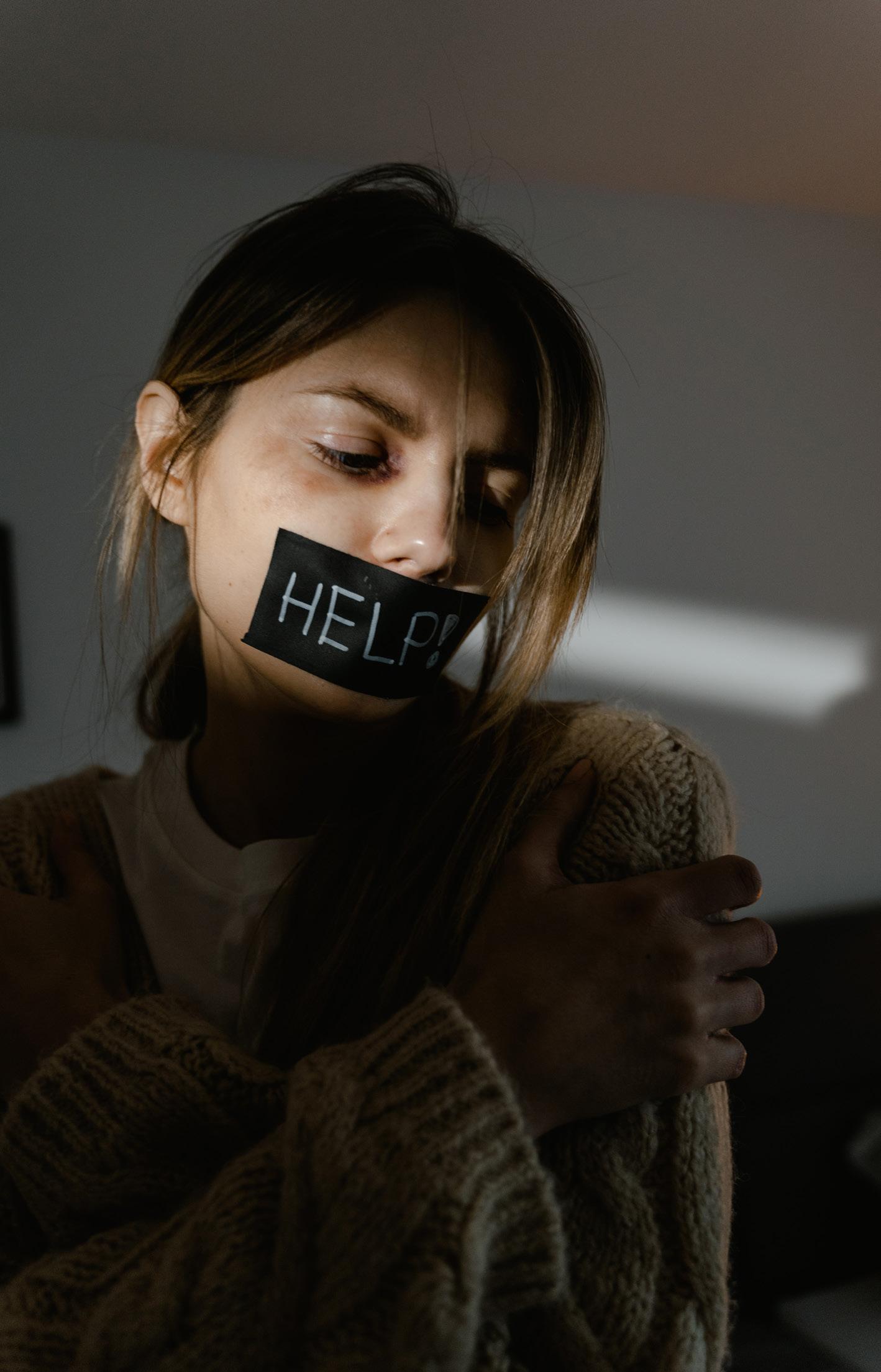
CL: This guilt and embarrassment has been embedded in us for
centuries. The feeling of guilt or shame from miscarrying or being infertile can be traced back to slavery. This notion is being linked to our sense of worth and value. In dark times of slavery, an enslaved woman of childbearing age was worth more on the auction block. There was an assumption that Black women could have children without
any problem throughout their childbearing age. In reality, this is not the case anymore. Today, there are hundreds of African-origin women who have infertility. Even after four centuries, we still carry that false narrative of Black women being “Fertile Myrtle.”
Motivated Woman: What would you advise young women in their early ‘20s regarding fertility?
CL: I suggest they pay attention to their bodies and question anything that feels off. For example, if someone has cramps that keep them in bed on day one of their period, they should ask their doctor to identify the problem and not just treat the pain with drugs.
Motivated Woman: What role can employers play to help women dealing with infertility?
CL: Employers can and should cover infertility as they offer pregnancy insurance.
Motivated Woman: As black women, how can we do a better job of advocating for ourselves with our doctors?
CL: We need to ask questions. Find answers. If a doctor answers unsatisfactorily, be courageous and seek a second opinion.
Motivated Woman: We have something in common, we both graduated from historically black colleges and universities. What do you feel that HBCUs should do to address any issues related to fertility?
CL: Not only HBCUs, but all colleges should do more to have conversations surrounding reproductive health. Because Black
women are more disproportionately affected by the medical outcomes, HBCUs can be on the frontlines leading these conversations.
Motivated Woman: Lastly, from all your research and stories you’ve learned from women, what is the most important advice that you would like to share that can help other women?
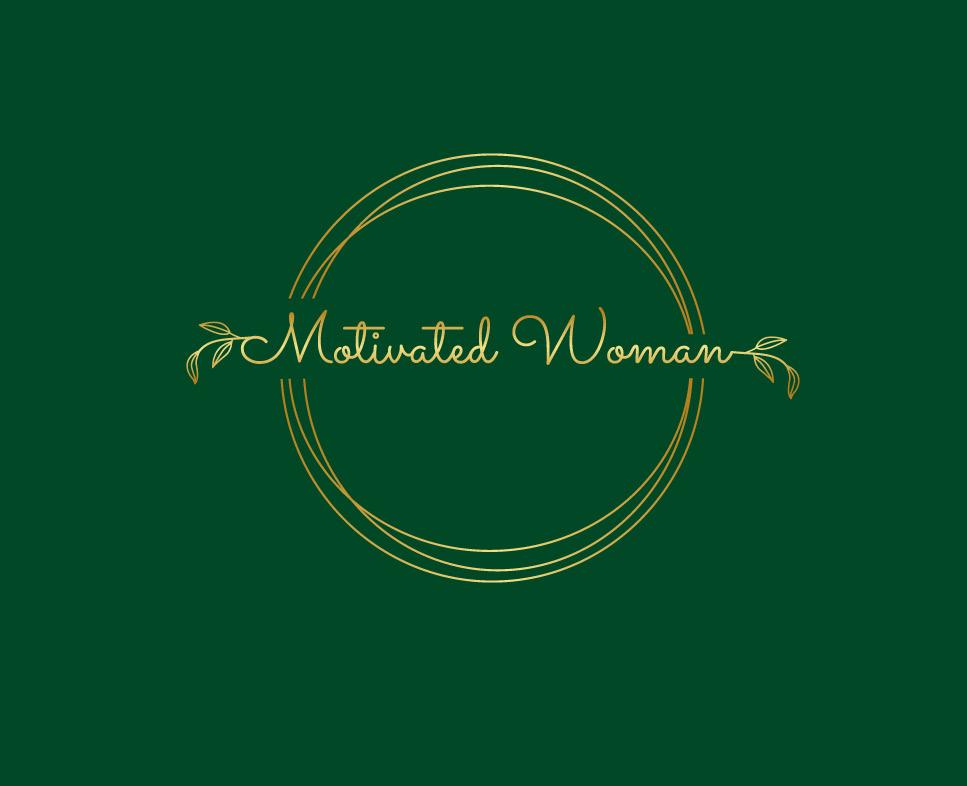
CL: Ask Early. A small problem at 30 can become an expensive and catastrophic problem at 40.
colleges should do more to have conversations surrounding reproductive health. Because black women are more disproportionately affected by the medical outcomes, HBCUs can be on the frontlines leading these conversations.
Women delay starting a family for a variety of reasons, including educational and career opportunities, delayed marriage, and increased access to contraception. The rates of women experiencing infertility and/or utilizing reproductive technology to become pregnant will continue to rise as women and couples wait to have children and start a family.
– American Psychological AssociationNot only HBCUs, but all
 By Megan J.L. Freeman
By Megan J.L. Freeman
This article is in memory of Jayme Bradford Kinard, who transitioned in November 2022. She received a Bachelor of Arts degree in journalism/mass media arts from Clark University and a Master of Arts degree in communication arts from University of West Florida. She devoted her life to education and was a member of Delta Sigma Theta Sorority, Inc.
I opted to participate in activities like the student newspaper or Student Government Association, where my intellectual talent would out shine my physical traits.
Research shows that Black people, specifically Black women, face many health challenges. High-poverty and racially segregated areas can contribute to the disease risk such as obesity.
Jayme Bradford Kinard, an African-American women, has struggled with obesity since childhood. “Growing up, I lived in urban areas where there were limited food options. There was fast food with minimum healthy choices.
Kinard said weight discrimination became more prevalent in high school, where social groups and activities are majorly imagedriven. Displaying the “perceived” wrong weight or appearance was a major hindrance for participation in social activities.
“I opted to participate in activities like the student newspaper or Student Government Association, where my intellectual talent would out shine my physical traits.”
At 16, she tried to participate in Alabama Miss Junior Miss Pageant, but was told that she was too big to compete. Kinard turned to food for comfort.
Her mother moved her to an integrated school to avoid bullying. “I had to grow thick skin; the bullying still existed, but

I could not let that deter me from living. I was called fat way before I was ever called the N-word.”
Licensed Nurse Practitioner and Director of Health Services Suzanne Williams said food could be as addictive as alcohol, especially when you are fighting with invisible pain. “Women already face a lot of health challenges. Risk of heart disease, diabetes and hypertension are doubled when coupled with obesity,” Williams said.
In college, Kinard wanted to pursue a career in broadcast journalism, but her mentor told her it was unreasonable unless she was willing to lose weight. Kinard ended up switching her career path to print journalism where she would not have to be in front of the camera.
According to Research Bites, obesity is often discriminately associated with unattractiveness, low productivity, laziness, sickness and absenteeism.
Kinard recalls weight discrimination while applying for jobs at different levels in her career path. Kinard said, “They were surprised because a large black woman was not what they were expecting.”
Kinard said her passiveaggressive attitude has helped her hold her head up high despite weight discrimination and even race and gender discrimination. “When someone tells me that I cannot do something, I work hard to prove them wrong.”
Although Kinard advocates for
want to be judged on my character and abilities, not by my dress size.
larger women, she still understands the risks and challenges obesity brings and suggests that larger women should not deny this fact and should opt for a healthy lifestyle.

Kinard lost her husband Roland E. Kinard in December 2020. “At that time of grief, I had to manage
my emotions and make sure that I didn’t fall into the trap of comfort eating again.”
“I want to be judged on my character and abilities, not by my dress size.”
To address weight bias, the Obesity Action Coalition (OAC) suggests using respectful language when talking about people affected by obesity, speaking up if you witness someone engaging in weight-based teasing and educating others about weight bias and its consequences.
More information on combatting weight bias can be found on OAC’s website obesityaction.org.
I
This issue’s healthy dish is from The Food Academy, which is a full-service hospitality company dedicated to providing creatively delectable culinary, hospitality and education experiences. The Food Academy provides services throughout South Carolina and parts of North Carolina. To contact The Food Academy, e-mail thefoodacademy15@gmail.com.
INGREDIENTS:
• 1 cup pre-chopped red onion (or onion powder)
• 1 cup pre-chopped celery (or celery seed)
• 1 can no sodium added carrots
• 2 tablespoons minced garlic
• 1 cup dry lentils
• 1 can no sodium added diced tomatoes
• 1 can no sodium added corn
• 1 can no sodium added diced potatoes
• ¼ cup low sodium Worcestershire sauce
• ¼ cup low sodium tamari or soy sauce
• 6 cups water
Dispelling the myth that was once true, which is canned goods are bad for you, that is no longer true for dump lentil and veggie stew. This dish has “no sodium added” options that do not contain the high levels of sodium that are harmful. This is a great recipe for a quick meal. Most of these ingredients can be stored for long periods of time at room temperature.
(Store ingredients for emergencies; use a grill to cook.)
PREP TIME:
30 minutes (microwave); 1 hour (stovetop)
YIELD: 4 servings
• Mrs. Dash Sodium-Free Seasoning Blend (season to taste)
• 1 bay leaf
• 1 tablespoon olive oil
• fresh or dry oregano to taste
• fresh or dry basil to taste
1. Add ½ of the water, tamari, Worcestershire, ½ of the celery, onions, and garlic, lentils and bay leaf to microwaveable container or pot. Microwave: cook for 10 minutes; stovetop: cook for 30-45 minutes until lentils are tender.
2. Add olive oil to pot on medium high heat, add onions & celery. Cook until onions are slightly browned. Stir in garlic for 1 minute, then add liquid with the lentils, the remaining water, celery, garlic and onions to the pot. Bring to a boil for 5 minutes. Add more seasonings to taste.

Suicide attempts among Black males are increasing more dramatically than any other racial group; they have risen nearly 80 percent since 1991. Researchers are worried about this huge number of Black men dying by suicide.
Suicide is ranked as the third leading cause of death for Black men from ages 15-24 years. Black men are four times more likely to die from suicide than Black women.
It is a fact that day-to-day struggle is enough to drain and trigger stints of depression. There is a need for more awareness about suicide and mental health, especially when it comes to Black men.
Black men often suffer mental pressure without anyone knowing. In many cases, their families are not aware of the mental struggles. This practice is not healthy as it disturbs their mental health and develops an intense sense of despair, loneliness and emotional pain that enables regular suicidal thoughts and, in some cases, gives way to suicide.

Black males have unique circumstances that contribute to this:
• Racial discrimination. The biggest culprit of the upward trend of suicides in Black males is racial discrimination, whether that is at school or work, it induces racial trauma and stress.
• Adverse childhood experiences. Black men have extremely high rates of adverse childhood experiences that affect their whole life and makes them suicidal at some point in their lives.
• Trauma. Any traumatic events or violent conditions they face in life disturbs them so much that they consider self-harm and suicide. The trauma and anger turn into isolation, violence and suicide.
• Stigma. Negative beliefs and attitudes toward those suffering from mental health challenges is particularly strong among the Black community. It is considered as a taboo in the Black community that leads men to press on instead of seeking mental health care.
Suicide can be a split-second decision with no signs before that makes it impossible for clinicians or loved ones to predict. It can also be a long process with minimal signs shown. Even if some signs are shown, it
is common for loved ones to miss these. Read on to learn the signs to look for if someone you know may be at risk of committing suicide:
• Unusual change in behavior. Mood shifts including increased agitation or irritability in someone who used to be kind, or calmness in someone sad and depressive may indicate one has suicidal thoughts. Additional signs include increased substance use, not wanting to do anything or go anywhere, and getting detached or emotionally distant from life in general when one is usually quite active previously.
• Change in habits and sleeping patterns. Look for any change in hygiene matters or sleeping patterns like sleeping more than normal or experiencing insomnia. This kind of sleeping pattern change is always a matter of concern.

• Physical symptoms. It can be headaches, general body pain or digestive upset without any easy explanation.
Look for depressive and suicidal signs such as hopelessness, deep despair, feelings of worthlessness, strong guilty feeling, isolation or signs such as talking about wanting to die, showing dangerous or selfharming behavior, threatening suicide, saying goodbye to friends or family or accessing lethal means
such as buying or stockpiling pills. The most important factor to remember is that men mostly hide their feelings, tensions, struggles and plans from others. This makes it hard to understand the internal turmoil Black men are in and know their intentions.
• A forum for Black men to talk and normalize the conversation about mental health care is needed.
• Highlighting the celebrities talking about their mental health problems that will inspire Black men to express their feelings or concerns.
• Convey the message to Black men that they are valued members of society, and their lives are full of meaning and purpose to decrease their feelings of unworthiness.
• Create interventions that
work to reduce the stigma associated with mental health treatment in Black communities.
Suicide is a devastating but preventable public health concern that is increasing day by day among Black men. This epidemic leaves their loved ones with burning questions as often they have no clue of the internal struggle their loved one is going through or of any suicidal plans. To stop this epidemic, learn the signs exhibited by anyone who may be on the verge of committing suicide and become aware of the necessary steps to be taken for reducing suicide among Black men and implement them to help others at the right time. Genuine efforts to mitigate suicide risk factors or root causes that put increased stress on Black men are needed.
Shalonda Oliver is the chief nursing informatics officer at Ralph H. Johnson VA Medical Center in Charleston, S.C. With the nursing profession continually facing shortages, Oliver speaks to Motivated Woman about her journey in the profession and why the role of nurses is incredibly impactful. A mom of two boys, Trevor, 16, and Oliver, 12, Oliver shares how she maintains a healthy work-life balance and the importance of mental health awareness. She has a Doctor of Nursing Practice degree from American Sentinel College of Nursing and Health Sciences at Post University.
MW: Why did you decide on a career as a nurse?
SO: After graduating from Claflin University in 2005 with a bachelor’s degree in biology and a minor in chemistry, my goal was to eventually become a gynecologist. Yet, I ended up teaching sixth grade science when I graduated. I wanted to stay home with my new baby; however, I still wanted to be in the medical field. I then decided to enroll in nursing school. I attended the University of South Carolina in Columbia and received my bachelor’s degree in nursing within three years. My decision to be a nurse was life changing. Once I started the process, I realized how flexible and open the world of nursing is. There are so many job opportunities. Some of which you would never normally think of that are available. For example, a nurse can be a legal consultant, work for insurance companies, travel, and some even work in Fortune 500 companies. I have had the pleasure of working in nursing informatics for the past five years, and I have a completely new learning experience every day.

MW: What made you transition to nursing informatics?
SO: I wanted to teach nursing and needed a master’s degree in nursing. Since I already had a master’s degree in education from Lesley University, I chose informatics as my
“Therapy is great and very helpful. It is nothing to be ashamed about.”
major. With a master’s degree in nursing informatics, the world of nursing opened even more. Now, I get to merge computer science, technology and nursing to ensure patients are safe and patient care is accurately documented. There is so much innovation and technology being introduced and used in health care today. My job helps me to help both clinical staff and patients learn new software and technology that will enhance patient care and documentation.
MW: What do you find most rewarding about your career in nursing?
SO: The most rewarding experience about being a nurse is all the lives I get to touch every day. I love people. I love to see them smile. I like to talk to patients and interact with the staff, hear their stories and help save lives. I’ve helped patients from having a baby to holding their hand during their last breath. It is an honor to be there for them and their families. Being a nurse is something special, and it makes me feel like my kids are proud of me.
MW: What are some of your biggest challenges in your profession?
SO: Some of my biggest challenges have been with my work-life balance. As a single mom, I want to be there for my kids, and take them places and do things with them all the time. However, I’ve had demanding jobs or multiple jobs trying to make ends meet and provide the life for them they have. I used to have two
jobs that I reduced to one so that I could allow them the opportunity to play sports and do other things on the weekends. With my current job, I come home and still work because I am trying to learn a lot of information in a short amount of time. It just took me awhile to reach that balance where I could do school and work but still be present for my boys. I also had to deal with personal challenges and work-related issues that would make things harder, but I worked through those challenges and continued to show up and do my best.
MW: What is your advice on having a healthy work-life balance?
SO: Put yourself and your family first. Work during working hours and do not overextend yourself unnecessarily. The job will always be there. Take care of yourself. You cannot pour from an empty cup. Take those vacations or time off when needed.
MW: Speaking of having a healthy work-life balance, many women who have a hard time finding this balance can sometimes fall prey to mental health issues. What are your thoughts regarding the signs and symptoms of someone struggling with mental health issues?
SO: If you feel you are overwhelmed, have anxiety or depression, or just feel like something is not right about how you are feeling or acting, please seek help. Some signs and symptoms include not wanting to get out of bed, not wanting
to be around people, random crying, overwhelming sadness, hallucinations and even suicidal thoughts. Other signs could be changes in their outside appearance. Are they taking care of themselves? Are they having changes in their weight? Many people handle or carry their mental issues in different ways. When things become noticeable, it is time to seek help.
MW: What are your recommendations for seeking help with mental health?
SO: Therapy is great and very helpful. It is nothing to be ashamed about. Sometimes, we just need the right people to talk to that can help decipher what we are going through and make suggestions to fix them. Most jobs offer five free sessions through Employee Assistance Programs for mental health. Some insurances pay for counseling. If money is an issue, there are great school counselors and pastors that will talk to you for free just to get you started. I recommend putting pride and ego aside and getting the help you need to be the best you. It is just too hard to function with an unstable mind.
Maya Angelou, an acclaimed author, the first female inaugural poet in United States history, the holder of five Grammys for Written Word, and recipient of the Presidential Medal of Freedom, felt that she would be “found out.” In a quote, she stated, “Each time I write a book, every time I face that yellow pad, the challenge is so great. I have written eleven books, but each time I think, ‘Uh oh, they’re going to find out now. I’ve run a game on everybody, and they’re going to find me out.”
Despite having fame, being a household name, and having worldwide success, what Maya Angelou experienced is known as Imposter Syndrome. According to the American Psychological Association, Imposter Syndrome is a persistent feeling of self-doubt, insecurity and incompetence despite evidence that you are skilled and successful. In addition, those who exhibit Imposter Syndrome are convinced they are frauds, not nearly as bright as they think they are, and attribute their success to luck. This term was first phrased in 1978 by psychologists Pauline R. Clance and Suzanne A. Imes to describe the feelings of self-doubt and “phoniness” experienced by high-achieving women. Since then, the concept of Imposter Syndrome has expanded into various aspects of one’s professional and personal life.
I first learned about Imposter Syndrome in 2016 when I was driving home from work, listening to an episode of one of my favorite podcasts, “The Friend Zone.” In this episode, the hosts interviewed one of their good friends Chescaleigh (Francesca Ramsey), who is a tv writer, producer and actress. At the time, Chescaleigh had just received her first television job as a contributing writer for the Nightly Show, which airs on Comedy Central. She talked about the extreme anxiety she felt in taking on this new project. She felt she did not belong as she was working in a writing room with 12 other individuals who had years of experience. In addition, these individuals had written for shows such as the Dave Letterman Show and the Daily Show with Jon Stewart, and she was just a “YouTuber.” She truly questioned why she was there and if her writing would be good enough. In hearing her story throughout the episode, it was as if a light bulb had gone off in my mind, and I remember saying, “Oh…so that’s what that was!”
I realized that my first interaction with Imposter Syndrome began when I moved to Texas to complete my last degree. Initially, I started my program online as a parttime student as I still had my fulltime job. Excelling in the classroom
had always come easy to me through hard work and excellent study skills. In addition, I genuinely enjoyed learning. So, it was not a shock to anyone when I informed them of my decision to pursue my Ph.D. full-time. After being on campus and physically going to class my first year, I was feeling confident…until the summer session began.

It had been years since I was in a math-related class, so I felt that it was in my best interest to fully focus on my statistics classes during the first and second sessions. Sitting in class (in the front row, of course), I remember being on edge every time I had to go to class. Although I read my chapters before class, took notes, recorded every class session on my phone, completed the homework and asked questions…I felt like I was struggling.
On test days, I would be the first student to arrive and the last student to leave. The professor would patiently wait for me to finish, which was anywhere from 30-45 minutes after the class had finished.
In one instance when I turned in my test, I remember her saying, “I feel so bad for you because I know you are trying so hard.” That one phrase made me question if I could even do this program. Two additional instances that would occur later in my program in which I received a “D” on a nutrition exam and being accused of plagiarism for a writing assignment had me thinking, “Maybe you’re not as smart as you thought you were. Why in the world did they let you in this program?”
Although Imposter Syndrome has not been officially recognized by the Diagnostic and Statistical Manual of Mental Health Disorders (DSM), many health professionals give credence to the effects that it can have on one’s mental health. According to a study that was published in the Journal of General Internal Medicine (Bravata et al., 2019), women reported higher levels of experiencing Imposter Syndrome than men. In addition, approximately nine – 82 percent of individuals have indicated experiencing varying levels of Imposter Syndrome at some point in their life. According to this study, the most common reported feelings associated with Imposter Syndrome included anxiety, depression and low self-esteem.

Additional common symptoms of Imposter Syndrome include but are not limited to the following:
• Fear that you will not live up to expectations
• Sabotaging your own success
• Berating your performance
• Not feeling comfortable receiving praise and congratulations
• Feeling incompetent despite demonstrating competency
Although initially focused on the workplace, several articles, blogs, books and websites are also focusing on how Imposter Syndrome can extend to one’s dayto-day living. Questioning oneself as a mother. Thinking that you are not doing enough for your aging parents. Wondering if you are the best helpmate to your spouse. Doubting yourself in being the best role model for your children.
These are just a few examples of how Imposter Syndrome can make us feel that we are hanging on by a thread. Where others can see the wonderful things that we do, internally, there is always the nagging sense of “I really don’t know what in the world I’m doing, and people are going to start to pick up on this.”
The intent of this article is not to definitively state or diagnose you with Imposter Syndrome. However, it may help you put an official name to a feeling of selfdoubt and unsureness over a new project assigned to you at work. This article can help you better explain a complicated task that your girlfriend from college has asked you to do and you can’t believe she thinks you’re qualified to do such a task.
Arlin Cuncic, from “VeryWell Mind,” suggests asking oneself the following questions if you think you suffer from Imposter Syndrome:
• Do you agonize over even the smallest mistakes or flaws in your work?
• Do you attribute your success to luck or outside factors?
• Are you very sensitive to even constructive criticism?
• Do you feel like you will inevitably be found out as a phony?
• Do you downplay your own expertise, even in areas
where you are genuinely more skilled than others?
If you answered yes to one or more of these questions, then you are not alone. The first step in dealing with an issue is to recognize that there is an issue. Because the severity of Imposter Syndrome can vary from person to person; there are a variety of ways in which it can be handled. For some individuals, this means taking a step back to recognize all the positive things that one has done and talking to a close friend or relative about their concerns. For others, it may mean seeking a licensed professional such as a counselor, psychologist, mental health professional or therapist.
Additional first steps that one can take are as follow:
Develop a Support System. Surrounding yourself with individuals who validate your concerns is extremely important. At times, it helps to verbally state to close family members and friends why you have feelings of uncertainty and doubt. Often, we are our hardest self-critics and, at times, cannot see all that we’ve accomplished. A good, supportive and consistent support system can help us to see what we cannot see.
Perfection Does Not Exist. The only completely perfect individual walked the earth over 2,000 years ago. It is unreasonable and unrealistic to achieve perfection in everything that we do. This sets one up for disappointment and failure when things do not go according to plan. This is not to say that we should be complete slackers, but we should give ourselves some grace
when we do make mistakes.
Who Cares What They Think?
John Lydgate stated, “You can please some of the people all of the time, you can please all of the people some of the time, but you can’t please all of the people all of the time.” In other words, no matter how you feel about completing a certain task or accomplishing a goal, there will always be someone who will not be pleased. The most important fact to keep in mind is knowing that you did your absolute best with the resources you had at the time. People will always think what they want to think, and there is no way to change their minds. Worrying about what other people may think is a waste of time and energy as you have no control over other people’s thoughts and emotions.
Failures Can be Lessons. In life, there will be times when we fail on a particular task or assignment. There is nothing wrong with feeling disappointment, frustration and sadness. However, these same feelings can be used as tools for improvement. Failure should be looked at from the perspective of identifying what went wrong and determining what could be done differently. Remember…delayed
does not mean denied.
Celebrate You. One action that most of us can work on is celebrating our personal accomplishments and achievements. There is a way to celebrate our successes without being narcissistic. The accomplishments that we publicly share can serve as an inspiration to others. It is not important to just celebrate the “big things” in life, but the smaller accomplishments should also be acknowledged and celebrated. It does not have to be a sense of bragging. However, the celebration can serve as a great reminder of how far we have come and what could potentially lie ahead.
In my next article series, we will focus on how Imposter Syndrome directly affects women of color.
LaToya Johnson, Ph.D., is an assistant professor and currently serves as the academic program coordinator for the Family and Consumer Sciences Business/ Multidisciplinary program at South Carolina State University. She has been an educator on the secondary and post-secondary levels for more than 18 years.


Heart disease refers to several different types of disturbed heart conditions when your heart is not doing its work properly. It is the leading cause of death in the United States where around 47 percent of people have at least one risk factor for heart disease, according to the Centers for Disease Control and Prevention. Heart disease is also the leading cause of death in Hispanics, Caucasians and African Americans.
You are at an increased risk for heart disease if you have a high cholesterol level, high blood pressure, diabetes, high stress or a family history of heart disease.
According to the American Heart Association, having both high blood pressure and diabetes can double your risk for cardiovascular disease.
If you are a smoker, overweight or are physically inactive, it also increases the risk. Men are at a higher risk for heart disease than women, and the Centers for Disease Control and Prevention estimates between 70 to 89 percent of all cardiac events in the United States occur in men. Age is also an important factor. From 20-59 years of age, both men and women have a similar risk for heart disease, but after age 60, men are more prone to have heart disease than women.
Heart disease includes a wide variety of cardiovascular problems, which involve both the heart and the blood vessels. Some types of diseases and conditions that fall under the umbrella of heart disease are:
• Atherosclerosis.
It refers to the hardening of the arteries and reduces the supply of blood to your extremities.
• Arrhythmia.
It means abnormal heart rhythm. Excessive alcohol or caffeine use, hypertension, heart defects, diabetes, coronary artery disease, substance use disorders, existing heart damage, stress or anxiety and certain medications or supplements can contribute to it.
• Cardiomyopathy.
This involves the hardness or weakening of the heart’s muscles
making them grow larger and turn thick, rigid or weak. Any previous damage to the heart caused by infections, drugs, a heart attack, uncontrolled blood pressure or inflammation can cause this condition.
• Coronary artery disease.
It means the build-up of plaque in the smooth and elastic heart arteries making them narrow, stiff and blocked slowing blood flow to the heart muscles. It is also called ischemic heart disease and this serious health condition is the most common type of heart disease which can lead to a heart attack.
• Congenital heart defects.
These are irregularities of the heart that develop when a fetus is growing and are present at birth.
• Heart infections.
These can be caused by viruses, bacteria and parasites and disrupts the normal flow of blood through the heart. It can be myocarditis or endocarditis.
Different heart diseases have different signs or symptoms. Read on to become familiar with them.

It is characterized by chest pain, shortness of breath, coldness, especially in the limbs, unusual or unexplained pain, numbness, especially in the limbs, and weakness
in your legs and arms.
• Arrhythmia.
Symptoms depend on the arrhythmia type you have. Some common symptoms are heartbeats that are too slow or too fast, light headedness, slow pulse, fluttering heart or racing heartbeat, fainting spells, chest pain and dizziness.
• Cardiomyopathy.
This is characterized by bloating, fatigue, swollen legs, especially feet and ankles, pounding or rapid pulse and shortness of breath.
• Coronary artery disease.
With this, you can have chest pain or discomfort, shortness of breath, nausea, a feeling of pressure or squeezing in the chest and feelings of gas or indigestion.
• Congenital heart defects.
The common symptoms associated are swelling of the extremities, blue-tinged skin, fatigue, low energy, shortness of breath or difficulty breathing and irregular heart rhythm.
• Heart infections.
This can cause chills, chest pain, fever, skin rash, chest congestion or coughing.
Women often exhibit slightly different symptoms of heart disease than men. A 2003 study that examined heart attack symptoms in women found that they did not have the classic heart attack symptoms like tingling or chest pain. Rather, they experienced
sleep disturbances, anxiety and unusual or unexplained fatigue that can be confused for depression or menopause. These symptoms are there for about one month in 80 percent of the women before a heart attack occurred.
Some other common symptoms of heart disease in women are paleness, dizziness, shallow breathing or shortness of breath, fainting, light headedness, cold sweats, back pain, jaw pain, nausea, vomiting, neck pain and indigestion or gas-like pain in the chest and stomach.
The treatment depends on the heart disease type you have and how far it has advanced. If you have a heart infection, you may need an antibiotic. If you have plaque buildup, you may need medication along with healthy lifestyle modifications. You can always make healthy lifestyle modifications to help in preventing
and better dealing with heart disease. See the various examples of lifestyle modifications.
Apart from medications, the disease can be prevented and treated by lifestyle changes. These changes can make a big impact to help you in keeping your heart healthy.
Healthy eating. According to the Centers for Disease Control and Prevention, eating foods high in cholesterol, saturated fat and sodium can be bad for the heart as they can increase your blood pressure and cholesterol making it hard for the heart to pump blood. To minimize heart disease and its risk, a healthy diet is a good place to start. Some heart-friendly food options are fresh fruits and vegetables, whole grains, beans and legumes, healthy fats, green tea and dark chocolate in moderation. Make healthy choices from them and avoid the unhealthy ones.

Doing regular exercise. Doctors mostly recommend 30 to 60 minutes on most days to make a total of two hours and 30 minutes each week. It also helps with keeping the blood pressure, blood sugar and cholesterol in the normal range. Consult your doctor for making sure that you can safely meet the recommended guidelines, especially if you have a heart condition.
• Quitting tobacco.
Cigarettes have nicotine that causes the blood vessels to constrict making it hard for oxygenated blood to circulate leading to atherosclerosis.
• Reduce alcohol consumption. Too much alcohol can give you a sustained increase in blood pressure which is one of the most important risk factors for having heart disease.
• Managing stress.
Find ways to reduce stress through healthy activities that you enjoy. Get your doctor’s help if you are frequently anxious, overwhelmed or have stressful life conditions to manage better.
• Getting regular health screenings. Seeing your doctor regularly helps in catching up on any potential issues early. Your doctor may help you with reducing the risk factors for heart disease and also provide tips for quitting smoking, exercising regularly, controlling blood pressure, maintaining healthy cholesterol levels, stabilizing blood sugar levels, losing weight if you are overweight, managing stress and eating healthy.
Although heart disease can badly affect your health and is deadly, you can work on preventable measures. Many of the symptoms of heart disease can be relieved with medications, surgery procedures and adopting healthy lifestyle habits. These methods can potentially help you live longer with a healthier heart. If you feel you are having symptoms or risk factors for heart disease, get an appointment with a doctor to know your health status.

Take charge of your health now before any diagnosis is made.
Disclaimer:
This content is only general information and does not substitute for a qualified medical opinion. Always consult your doctor or a medical specialist for further information.
Each year, more African American women die from heart disease than breast cancer, lung cancer and strokes combined, which makes heart disease the No. 1 killer of African American women in our nation. However, studies have also revealed that less than half of African American women are aware that heart disease is their No. 1 cause of death.

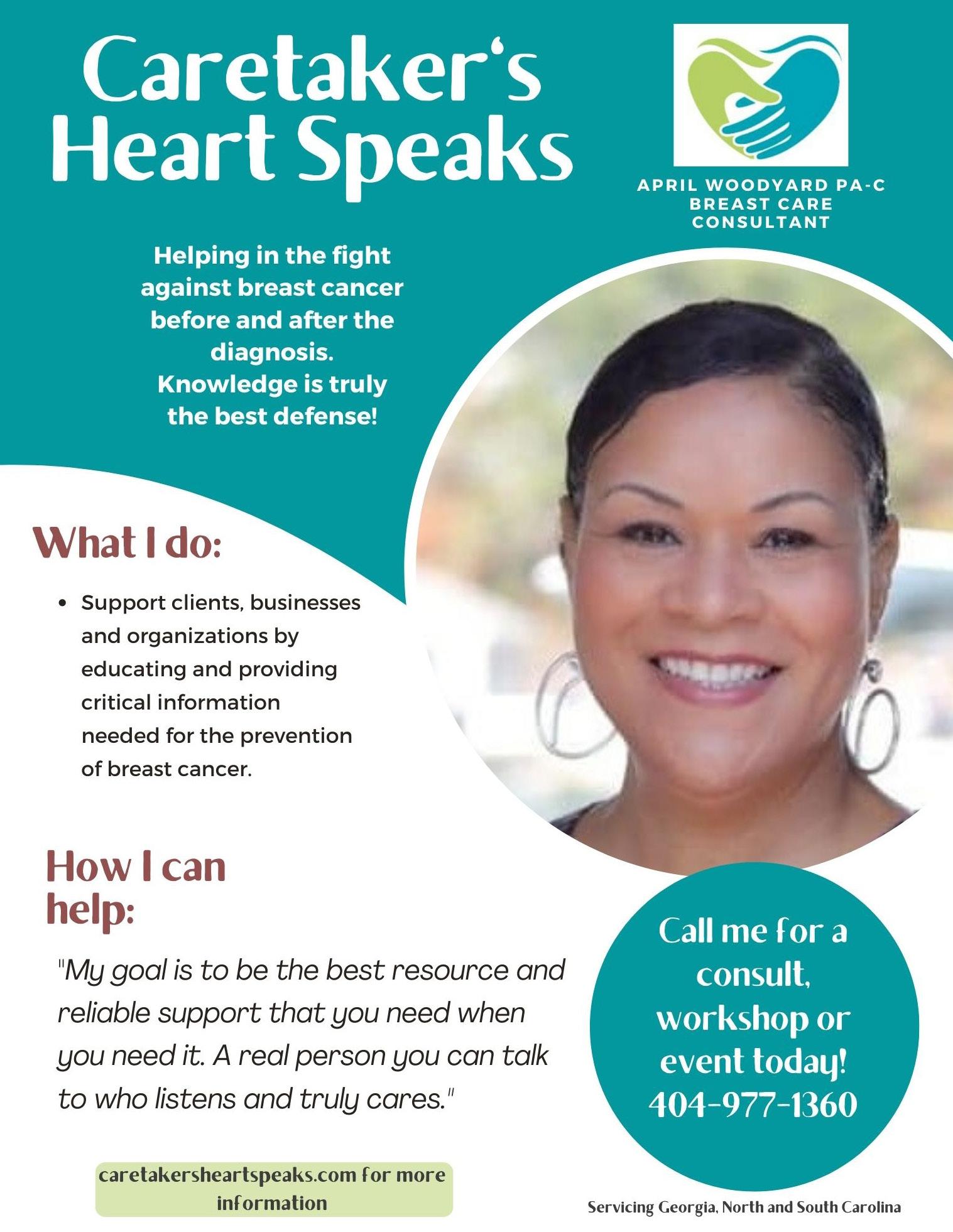
Some of us ladies have few friends, as it is because of the social imbalances that can occur between females. However, when we get a good one or feel we have, we try to hold on to that friend forever. Let us think about the “best friends” we have in our lives and then assess the energy, work, feelings, successes and failures that go into that relationship. Have you ever asked yourself, “Is it worth it?”
Unbelievably, fighting with a friend that becomes long-lived can affect a women’s mental health
by causing emotional distress. According to the Substance Abuse and Mental Health Services Administration, overeating, having low energy, feelings of helplessness and hopelessness and pulling away from people or things are a few of
the symptoms of emotional distress that can ignite during a broken friendship.
I cherish friendships and deeprooted personal relationships, and the more years invested in the friendship, the more I fall deep into the “care-zone,” which has me racking my brain when a problem arises to figure out what went wrong. I carry the issue for days communicating with the friend and reaching out to others to get additional feedback. But what happens when the communication stops but your wishes to pursue

Although they were your friend for a reason, the relationship may have reached its season.
a solution do not? We begin discussing the matter with others who will side with you to feel you are not alone on the battlefield. By the way, women, we need to stop doing that. We should try and find others who are not biased either way to fully reflect on the situation and own up to parts we did or did not realize we did that contributed to the issue.
According to Psychology Today, women rely on friendships and bonds with each other as support systems. We share secrets, intimate moments, health, beauty and life tips with each other because men don’t get it or don’t care to get it. When the relationship becomes broken, women can feel like they do not have someone to turn to even if other family and friends surround them. Also, many times, it just so happens something positive or negative occurs in your life during your feud, and that friend is the first person that comes to your mind to call for the listening ear. You may even compromise your stance on the issue to cater to their
feelings just for a second if that means you could get a piece of that relationship back. Unfortunately, altering your beliefs and feelings will not make things ok but increase your struggles with feeling your opinion doesn’t matter.
According to psychologist and adjunct professor at Georgetown University Andrea Bonior, a friendship experiences imbalances and will not be a 50/50 split all the time. However, know when it is a brief phase worth fighting for versus a longer-term issue that is not as important. Was that time in your friend’s life worth it to them not speaking to you, removing you from Facebook, blocking your calls and text messages and refusing to attend social events you may participate in necessary? Battling these answers makes you question the validity of the friendship in the first place. The situation festers in your mind, and you wake up thinking about the problem all day long and at night in bed. You may ask, “Was it that serious,” or “Was I that bad of a friend to throw away all those years of friendship over this?”
Ladies, friendships that start also can end. As time goes by, different things occur in our lives that affect our social relationships, such as careers, family, marriage and divorce, health issues and life’s ups and downs. Nothing will stay the same no matter how much you wish it does. After years, unfortunately, one argument can brew into a silent
war between you two, and you reach the crossroads. Is it over? Like a bad romantic relationship, once the sparks stop flying and “working on it” becomes a full-time job, we have to say goodbye. When working on getting your mind back on track, professional help may be the answer so you can tap into your feelings about the relationship and take action to let go in the healthiest way possible, like with self-care rituals according to Women’s Health. Personally, I am still working on this.
Although they were your friend for a reason, the relationship may have reached its season.
Megan Freeman earned a Doctorate of Strategic Leadership Degree with a concentration in leadership coaching from Regent University. She is the founder, owner and CEO of Leadernificent LLC, an organizational development business.

Like a bad romantic relationship, once the sparks stop flying and “working on it” becomes a full-time job, we have to say goodbye.
Aloss of someone that you love can be a confusing and bewildering experience. When you find yourself dealing with grief over the loss of something or someone in your life, you can experience a number of emotions and wonder how you might deal with the feelings that you are experiencing. Defining grief and loss is a good place to start.
Grief is the response to a loss, particularly to the death of someone to which a bond or affection was formed. When we think of loss, we think of something that has left. Loss can include death, a significant life change, or a significant disconnection. Loss and grief are often talked about together as they tend to go hand in hand. A loss occurs and the person who has experienced the loss begins the grieving process.
According to Kubler-Ross, there are five stages of grief: denial; anger; bargaining; depression; and acceptance. Another popular theory of grief includes the seven stages of grief, which are shock and denial, pain and guilt, anger and bargaining, depression, the upward turn, reconstruction and working through and acceptance and hope.
Researchers have learned over time that the stages of grief are not
linear and that a person may not experience all the stages of grief. The grief wheel is a good graphic representation of the grief process. You may find yourself moving back and forth through the grief stages. The important thing to note is that grief remains as you continue to live and grow. The belief is that grief doesn’t end, and that you grow around your grief. This lends itself to the belief that a person may experience these stages at any time over their lifetime.
You may find that dealing with grief and loss on your own can be difficult. In instances where you feel overwhelmed, you might seek intervention from a mental health professional. A well-trained therapist with a specialty in grief work can be quite helpful in helping one navigate such a difficult experience. Below, you’ll find some ways to cope and a few interventions that a therapist might employ to assist you through your grief journey.
Grief treatment takes a level of compassion and skill. Clinicians can also get special certifications and continued education to allow for optimal treatment of those suffering with grief.
When one experiences the
death of a loved one, they tend to first experience shock and disbelief that the loss has occurred. Once a person has sought therapy to address grief issues, there are a number of approaches that a therapist may take when allowing someone to process through grief.
As a therapist who walks those through grief, one thing that I find hugely important is psychoeducation. Education is so powerful because so often people are shocked and surprised about the intensity and duration of their grief. They find it literally unimaginable. Grief is so complicated and such a unique experience for each individual that it is difficult or impossible to understand without actually having experienced it. I encourage those experiencing grief

to give themselves lots of grace and to be very gentle with themselves. I also encourage them to expect intense feelings of grief for at least 18 months at minimum.
How does one handle the loss of a loved one?
One of the first things that I encourage people to do is to feel the feelings that they have. Suppression of emotions can be quite dangerous over the long term, and it is a healthy thing to express any feelings of sadness, disappointment, anger, confusion or guilt after the loss of someone. Sitting with uncomfortable feelings can be quite difficult, but it can offer clarity around feelings of loss. A therapist will support you in sitting with those feelings, providing you with a safe space to talk or not about anything you may be feeling. A therapist may also help you identify the feelings so that you have the words to put to what you are experiencing.
Identifying a support network is another important part of coping with the death of a loved one. A therapist might encourage you to think of who is available and willing to provide emotional support and to think about what you might need from each person that you’ve identified. It is perfectly
okay to not know what you need. It is also okay for your needs to include things as simple as having someone sit with you just to have a felt presence in the room. A therapist might encourage you to reach out to your identified support system and even guide you with modeling the language that you need to ask for emotional support and any other help that you express needing during times of grief.
Have conversations with your deceased loved one. Don’t shy away from talking to your loved one or writing letters to them. This can really serve as a cleansing exercise and make you feel close to your loved one. Your therapist might suggest a template to guide your conversations with your deceased loved one.
Grief can be everchanging and moves and grows with you. Grief doesn’t magically end. You continue to live and grow around your grief. When you grieve, you grieve in the past, present and the future. You remember your loved ones past presence in your life, you feel the loss of their presence in your present, and you feel the loss for the life you will experience without them. All of this is normal. If you suddenly feel sad, take a moment to think about whether that sadness is related to the loss
that you experienced. Many times, the feelings experienced at the time of the loss will crop up around the same time of the following year. This can happen for years. Taking a step back to really listen to your body and assess the situation will help you identify where the feelings may be coming from. Your therapist might ask you what was happening in the previous year or what has come up in your present that might be connected to your grief. A therapist can help you make sense of things and help you connect the dots and feelings so that you may properly process your thoughts and feelings.
All in all, grief and loss can really surprise and overwhelm us, but there are ways through. Discovering who you will become after loss is important work and having the support of a skilled mental health professional can be hugely beneficial as one walks through it.
Tarrah Bonaparte, LCSW, is in private practice in Nashville, Tenn. She works closely with those navigating through anxiety and depression.
Because infertility is something of a taboo topic in the Black community, infertility services have long focused overwhelmingly on white women.
– STAT NewsFertility in women was considered a private subject in the past, but with more awareness, infertility in women has become a common topic with many buzzwords that could sound confusing. With a massive decline in the rate of women’s fertility, knowing some of the common buzzwords of infertility and women’s health is essential. Let’s explore the top 10 buzzwords in infertility and women’s health.
IVF
Instead of writing the entire phrase, many people are comfortable just saying 'IVF.' In-vitro fertilization is an assisted reproductive technology coined by two doctors, Robert Edwards and Patrick Steptoe. They used IVF in the 1970s to help deal with women's infertility caused by blocked or damaged fallopian tubes. IVF involves fertilizing the ovum from a female partner with sperm from a male partner through a laboratory procedure and later implanting the embryo formed in a test tube directly in the uterus, where it grows normally. Those who have undergone such procedures can give birth just like any other healthy woman.
IUI could stand for multiple words with different meanings in the world of acronyms. However, IUI is a popular acronym in discussions and publications around women's fertility. IUI means Intrauterine insemination. IUI is an assisted reproduction technology; its history dates back to the 1880s. The technology involves a deliberate introduction of sperm cells into the uterine cavity, or cervix, using other means apart from in-vitro or natural intercourse. However, the method is complex and invasive. Therefore, it should be carried out by a medical specialist. Despite having a long history, technology isn't a relic of the past, as cases of artificial insemination are frequented in the
20th century.
This is yet another buzzword in the 20th century, dating back to the 1970s and 1980s. Have you ever heard of a woman who gave birth to a baby she's not genetically related to on behalf of another woman? Well, such cases aren't rare. That is where the term 'surrogacy' comes in handy. The most common surrogacy today is gestational surrogacy. It involves an IVF cycle where sperm and ovum are extracted from the donor parents and fertilized in a test tube. The developing embryo is then implanted into the uterus of a gestational surrogate mother, who only acts as a carrier. However, this process requires signing legal documents to be completely acceptable.
REI is an acronym that means “reproductive endocrinology and infertility.” REI doctors are specialized in helping women struggling to conceive naturally to get pregnant. The term is most common among those struggling with reproductive issues such as endometriosis, male factor infertility, polycystic ovary syndrome (PCOS) and tubal factor infertility. Women who have struggled with conception for six to 12 months are usually referred to 'REI' doctors.
If you love social media gossip groups and pages, OB-GYN could be a pretty common term in the conversation about fertility and parenting. An OB-GYN combines the work of an obstetrician and gynecologist. As such, they take care of women's reproductive health, childbirth and go all the way to menopause.
Although it's an acronym for maternal-fetal medicine, MFM is one of the buzzwords that could leave you wondering what it means exactly. Maternalfetal medicine specialists focus on helping women with complex or high-risk pregnancies.

Have you ever heard of cases of irregular periods or facial hair growth? It could be due to PCOS. This acronym is widely referred to as Polycystic Ovary Syndrome (PCOS), a health issue first diagnosed in 1935 at the University of Utah. According to information published by the Mayo Clinic, PCOS is characterized by many small cysts in the ovary resulting from excess male hormone production. The hormonal imbalance could prevent ovulation, leading to infertility.
Unlike some buzzwords that have stayed in use from the 1800s, femtech is among the newest buzzwords, nearly half a decade into operation. Femtech was coined by a Danish entrepreneur in 2016, referring to a broader category of digital tools focusing on women's health. This includes period tracking apps, fertility solutions, pregnancy and nursing care. Since then, it has become a buzzword in the current era.
Typically, people use TTC as an acronym for “trying to conceive.” Physicians consider it to be the time in which couples have regular and unprotected intercourse with the aim of having a baby.
Wondering what it means? Basically, 2ww means two weeks wait. Typically, it takes two weeks for a fertilized egg to implant into the uterus to produce enough human chorionic gonadotropin (HCG) to show in the beta pregnancy test. Therefore, physicians can't be reasonably sure the pregnancy results are accurate before the two weeks pass.
South Carolina Institutes of Innovation and Information are proud to celebrate the momentum of Motivated Women and lifting up the lives of South Carolina Women.

The golden rule says, ‘do unto others as you would have them do unto you.’ But when it comes to healthcare for the Black community, particularly Black women, that has not always been the case – in fact, it’s quite the opposite. In the pages of this very magazine, we’ve all read heart-wrenching, compelling, and, yes, motivating stories of the complicated healthcare journeys of Black women.
If you’re Black, you’ve probably experienced it yourself -- you have had your complaints and symptoms downplayed or dismissed; your pain ignored or undertreated; or your diagnosis based on stereotypes.
Older Black Americans have memories of segregated practices, clinics and hospitals, and many remember repulsive and unethical medical practices, including the 40-year-long Tuskegee syphilis study. Black women are three times
 Dr. Gwynth R. Nelson Executive Director of South Carolina Institutes of Innovation and Information
Dr. Gwynth R. Nelson Executive Director of South Carolina Institutes of Innovation and Information

more likely to die while pregnant or during the post-partum year – in some states, like Louisiana, they are four times more likely to die.
Even today, we know that racism, discrimination and unconscious bias continue to afflict our health care system. For example, if a Black woman came to the doctor or hospital with pain in her pelvis, often, medical staff would assume that she had a sexually transmitted disease that caused pelvic inflammatory disease. There is a hidden racist view about Black women’s sexual activity behind that assumption. On the
other hand, if a White woman came in, physicians might initially assume she had endometriosis, not an STD. Endometriosis is less stigmatizing since it isn’t – and isn’t related to -- an STD.
Because of this, it’s not a surprise that many Black female patients prefer a Black female medical practitioner. Not only do they share a culture and core values, but a Black physician can offer Black patients a sense of safety, trust and rapport. Unfortunately, Black female physicians are not that easy to find.
While black Americans
So how do we improve health outcomes for Black women? One way to start is to recruit and train more young Black students in the fields of medicine and nursing, particularly female students. At South Carolina Institutes of Innovation and Information (SCIII), that is one of the goals we aim to achieve through our transformative new initiative.”
comprise 13 percent of the U.S. population, they make up only 4 percent of the 877,000+ active physician workforce. Black female doctors represent only two percent of physicians.

So, why does representation matter? Research shows us – and logic suggests – that when we have patient-provider racial and gender concordance, we have better collaborative medical decision making - which leads to better outcomes.
So how do we improve health outcomes for Black women? One way to start is to recruit and train more young Black students in the fields of medicine and nursing, particularly female students. At South Carolina Institutes of Innovation and Information (SCIII), that is one of the goals we aim to achieve through our transformative new initiative.
SCIII is an initiative and vision inspired by Sen. John L. Scott, Jr., focused on revolutionizing and cultivating the state’s seven fouryear HBCUs' overall capabilities and contributions for the citizens and residents of the state. South Carolina has a rich history when it comes to educating people of color, and its HBCUs produce more than 50 percent of all Black college graduates in this state. SCIII provides the perfect conduit for partnerships between South Carolina’s HBCUs and state business and industry, diversifying and improving the state’s workforce.
The South Carolina General
Assembly appropriated $18 million in 2021 toward the development of educational institutes at each of South Carolina’s HBCUs. Each institute was established with specific focuses and disciplines united to increase opportunities and exposure for their student bodies on campus and the surrounding community. For example, Claflin University is launching the Institute of Teaching and Nursing (TITAN). TITAN will focus on galvanizing education for students who are pursuing teaching and nursing careers. Clinton College will launch a Wellness and Community Health Institute (WACH) to focus on overall wellness and community health in the state.
SCIII recognizes the intersectionality of industry, business and individual workers; the organization will strengthen HBCUs by building pipelines from each Institute directly to opportunities in state business and industry. With more students going directly into medical fields like nursing, community health and medicine, we can bring about transformative change to healthcare for our Black sisters. They deserve that; don’t you think?







For Julia’s family, early screening for autism made a lifetime of di erence. Find out more at ScreenForAutism.org




















Depression is a pervasive and serious mood disorder affecting more than 19 million adults each year within the United States. It gives you feelings of hopelessness, sadness and worthlessness. It can be mild to moderate or more severe.
Depression can affect every dimension of your life including social life, physical health, professional life, relationships and sense of self-worth. Within women, contributing factors such as social pressures, reproductive hormones and the unique female response to stress, according to her life experiences, play a great
role in complicating the condition. However, one thing that gives comfort and is important to know is that you are not alone. Women are twice as likely to suffer from

depression as men and about one in every eight women can expect to have an episode of depression at some point in their life.
It is good to know that depression is entirely treatable and there are plenty of things you can do to make yourself feel better. The problem is that sometimes it becomes difficult during a depressive time to take any such step. Although you may not be feeling energetic, going for a walk or calling a loved one helps you in boosting your mood and improving your state.
You need to learn about the
Women are twice as likely to suffer from depression as men and about one in every eight women can expect to have an episode of depression at some point in their life.
You no longer care about your previous hobbies, social activities and past times that you used to enjoy a lot and were once important to you.
factors responsible for causing depression and the top signs and symptoms of depression to handle the condition better, treat it effectively and aid yourself in preventing depression from returning.

Here are some of the top signs or symptoms of depression.
You lose hope and feel that nothing is going to get better ever. You are disappointed to the level that you keep thinking that there is nothing you can do to improve your situation. Everything seems out of control to you and this tense and pessimistic feeling isn’t just for a brief period, rather you feel like that constantly. This sadness may make you move or talk very slowly.
The problematic issues are always on your mind. Even a tiny trigger is enough to make you get angry, agitated, irritated and
restless. You have extreme episodes of anger and do not find comfort easily. You become anxious and have trouble sitting still as you are not able to come up with a way that resolves your issue and this keeps you disturbed. Loss of interest in activities
You no longer care about your
previous hobbies, social activities and past times that you used to enjoy a lot and were once important to you. Maybe your condition disturbs you so much that you are not having the expected pleasure in them. You are withdrawing from family and friends. Even you don’t have an interest in important activities related to your work and
relationships and have trouble concentrating, remembering, making decisions and completing the task.


Panic attacks, dramatic mood swings and crying spells
You have a sudden episode of intense fear that triggers extreme physical reactions like fast breathing, sweating and a racing heart when there is no apparent cause or real danger. It can be very frightening. When this happens, you think you are losing control, having a heart attack or even dying. Another symptom you can have during depression is a dramatic mood change with excessive crying spells. You continue crying and find
it harder to control yourself.
Appetite changes
It can be both ways; either you eat too much or too little regularly and both can be dangerous for you
as it raises further health concerns. You can have significant weight loss or weight gain and no longer stay healthy as you used to be. Some people start emotional eating with depression that makes them eat

too much and for some people, depression means loss of appetite that leads them to not eating enough.
You either sleep too little or too much. You have difficulty getting to sleep or staying asleep and may face early morning awakening issues. In the other scenario, you are sleeping more than usual and struggle to get out of bed in the morning.
You will experience persistent physical symptoms such as digestive disorders, an increase in pain and aches including headaches or cramps, fatigue, decreased energy, tiredness all the time, sluggishness, exhaustion and breast tenderness without any such cause. These disturbing physical symptoms do not respond to the treatment for them as the main issue that needs to be tackled here is stress that is
upsetting your whole body and systems within.
You are too self-critical and harshly criticize yourself for your perceived mistakes and faults. You consider yourself responsible for anything happening wrong and have strong feelings of worthlessness and feel overwhelmingly guilty.

You think your life is worthless and feel that you are not important to anyone. You think death will ease your condition and come up with suicidal thoughts. Some even attempt suicide. If you are feeling suicidal, it is a sign that you are not considering your problems temporary but permanent and overwhelming. This condition requires immediate attention and help-seeking so that you can feel better.
Depression hurts in any case. It does not matter the stage of depression that one is in, it is a serious issue and should be taken seriously. Thinking of your symptoms as a normal part of life and suffering in silence is a redflag. You may have developed depression if you have been experiencing the above signs and symptoms for at least two weeks. Don’t hesitate to consult a mental health professional to make an accurate diagnosis and get the treatment. Although depression seems overwhelming, it is treatable and many effective ways are there that make you feel better.


Now Accepting On-Site Appointments

Telephone: 803-531-1662/803-347-8001 for additional information.
Orangeburg, South Carolina
Reverend Joseph A. DeLaine, a courageous, fearless, faithful man of integrity, was the impetus behind the Clarendon County Briggs petitioners. After this case combined with four others led to Brown v. Board of Education, he frequently became a target and received death threats. In 2004, President George Bush awarded DeLaine, Briggs and Pearson, the Congressional Gold Medal for their efforts which overthrew the 1896 Plessy v. Ferguson and ‘separate but equal’ doctrine and legal segregation; all this years and months before the better known MLK, Rosa Parks, and Montgomery Bus Boycott. This history and legend rightfully places South Carolina as the birthplace of the Civil Rights Movement.

Despite tremendous progress in reducing HIV transmission since the height of the epidemic, HIV continues to disproportionately affect Black people in America.
-CDCEven though Connie Johnson is a wordsmith, she still isn’t able to find the right words to articulate the feeling she had 20 years ago when she learned she had contracted HIV.
“When I was diagnosed, I was devastated of course,” Johnson said. “I am a writer, and I still haven’t developed the words to describe what that moment was like.”
At age 18, Johnson took care of her mother who died of AIDS in 1995, dying just two days shy of her 45th birthday.
“I was doing hospice care at 18, but I didn’t know that was what I was doing,” Johnson said. “Watching her die was heartbreaking. I am watching my super woman literally dwindling in front of my eyes. When she passed away, that kind of started my spiral down in my late teens, early ‘20s.”
When Johnson was diagnosed with HIV in 2002, she was a non-traditional student attending a historically
black college in Columbia, S.C. At 25 years old, she learned of her status.
“I had a rough patch between my teen years and my early to mid-twenties,” Johnson said about her past. “It was really rough, like a blur of parties and drugs and all sort of stuff.”
She said she contracted the virus through heterosexual sex though she is unsure of the exact timing, since she has been a victim of sexual assault several times.
“From what I was told when I was diagnosed in 2002 was that the virus had been in my bloodstream for 10 years or more,” Johnson said. “That would have taken me back to my teenage years. I had actually contracted HIV/AIDS as a teenager but didn’t know it.”
The diagnoses sent her into a deep, dark spiral eventually leading her to withdraw from school. But when she came out of that depression, she returned to school and used the memory of her mother to move
I watched my mom pretty much die in silence; she didn’t tell anyone that she had it. What I did differently was, I said, ‘if I am going to go, I am not going silently and not going without a fight.'

forward. She said that only God helped her get out of that dark place.
“I watched my mom pretty much die in silence; she didn’t tell anyone that she had it,” Johnson added. “What I did differently was, I said, ‘if I am going to go, I am not going silently and not going without a fight.’ I instantly began telling people. The more I said, ‘I have HIV,’ the more real the diagnosis became.”
Johnson, who recently turned 46, said her goal was to outlive her mom. She is now in a space of being clear and sure of who she is. She went on to graduate with a Bachelor of Arts degree in child and family studies from Columbia College in 2009. Additionally, she earned a Master of Arts degree in social justice and community development from Loyola University in Chicago. She authored the book, “Beyond Measure,” a collection of stories of women who live in Kenya who are HIV positive.
“Their stories were so amazing to me; their stories inspire me,” Johnson said. “I collected 8 of the women’s stories. It is a partial fundraiser for an organization called Living Positive Kenya.”
She is currently employed by a local technical college and is in the process of writing a second book, a memoir.
Johnson mentors youth and wants to help young women discover who they are and what they love so they do not have to look outside of themselves for love and validation.
“A lot of my philandering and stuff was just me
seeking validation and admiration externally,” she added. “But once you have that for yourself and it comes from within, you make different decisions with your body, with your health, with your life.”
Johnson said a lot of trauma was centered around the relationship with her father. She said for women who have children, it’s doubly important to have a sense of self validation because people are looking
up to them for guidance.
“As a 44-year-old mother of two, she ultimately gave her life searching for love,” Johnson said of her mother.
Johnson takes care of herself by watching what she eats, taking her medication and practicing mindfulness. Although she’s been single for several years, Johnson hopes to be married one day.
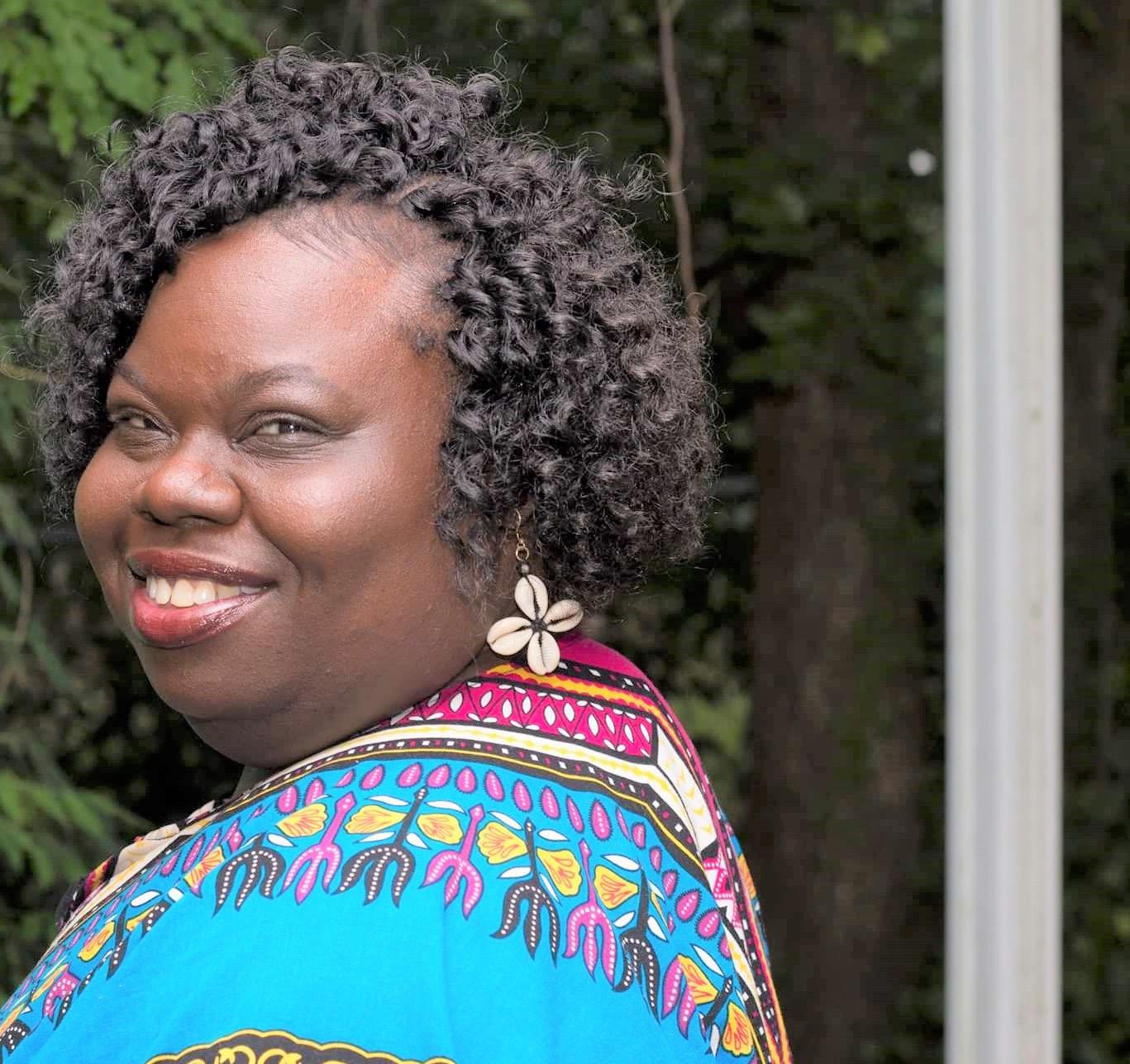
“I don’t want anyone to pity me. This is not a sad story,” Johnson said. “This is a story of circumstances that happen in life. I hope that my story is an example to others that you can overcome and move I don’t want anyone to pity me. This is not a sad story. This is a story of circumstances that happen in life. I hope that my story is an example to others that you can overcome and move forward.
forward. You don’t’ have to stay stuck in the tragedy. I am a woman who is ‘LIVING’ with HIV.”
Though HIV diagnoses among women have declined in recent years, nearly 7,000 women received an HIV diagnosis in the United States and dependent areas in 2019.” -CDC

"I am enough"
when they say that women should be quiet and stay in their place instead, they got a woman who speaks her mind with a presence so divine beautifully designed thinking about how many women have felt defeated the ones we had to say their names the ones that carried burdens the ones that overcame
"I knew I could"
that's all she said after watering the roots of other women so that they could all stand tall through it all we rise you are not alone you are perfect
in the body that your soul calls home it takes grace to handle the obstacles that you had to face
they will study your poise a wise woman once said nothing and still made noise they will wonder how your light shines with radiance
they will study how you walk with confidence
we are a tribe of women trying to survive praying to a higher power we are here to empower

when you hear her say she wants to give up help her find a way
what mantra do you need to say?
"I am enough" -
 By Shakora Bamberg
By Shakora Bamberg
Pamela Mack, a special education teacher, struggled with infertility issues for many years before conceiving. After suffering four miscarriages and changing doctors, she was diagnosed with an incompetent cervix.
An incompetent cervix, also referred to as cervical insufficiency, is a condition that causes the cervix to open or dilate too early during pregnancy due to the weight of the baby, which results in premature birth or miscarriage, usually without pain or contractions.
“My struggle was maintaining pregnancy,” Mack said. “I had a miscarriage in 2007, 2009 and two in 2011. I was 16 weeks pregnant each time.”
According to Cathy Parkes, a registered nurse at Scripps Memorial Hospital in California, symptoms of premature dilation of the cervix are pelvic pressure, bleeding or pink vaginal discharge.
“A therapeutic procedure that can help prevent incompetent cervix is cervical

“There aren't any tests that can be done before pregnancy to reliably predict an incompetent cervix. However, certain tests done before pregnancy, such as an MRI or an ultrasound, can help detect uterine abnormalities that might cause an incompetent cervix.”
Mayo Clinic
To finally have an answer as to what the issue was most definitely provided relief, but I wasn’t going to be truly satisfied until I was able to deliver a baby successfully.
 Pamela Mack
Pamela Mack
cerclage,” Parkes said. “With this procedure, the cervix is sewn closed usually until around 12 to 14 weeks of gestation. The stitch is removed at 37 weeks gestation or when spontaneous labor occurs.”
After being diagnosed with an incompetent cervix, it is recommended for the patient to adhere to activity restriction, and bed rest is usually prescribed. Additionally, adequate hydration is needed as dehydration can lead to uterine contractions, and no intercourse is suggested.
Before being diagnosed with an incompetent cervix, Mack grew frustrated from the lack of concern from her doctor.
“With my first two miscarriages, the doctor had no clue as to what was happening. All he would say was, ‘just try again,’” Mack said. “I was not satisfied with that answer,
so I decided to change my doctor.”
After the two miscarriages in 2011, Mack said that her new doctor began running several tests to figure out what was wrong.
“There was one test where he inserted a microscope into my uterus, and it spontaneously opened. He informed me that was not supposed to happen. It was then that I was diagnosed with incompetent cervix.”
Mack’s doctor then referred
her to a specialist at the Medical University of South Carolina. After having more tests, it was then confirmed that she suffered from an incompetent cervix.
Mack stated that finally knowing what her issue was granted her peace.
“To finally have an answer as to what the issue was most definitely provided relief, but I wasn’t going to be truly satisfied until I was able to deliver a baby successfully,” she said.
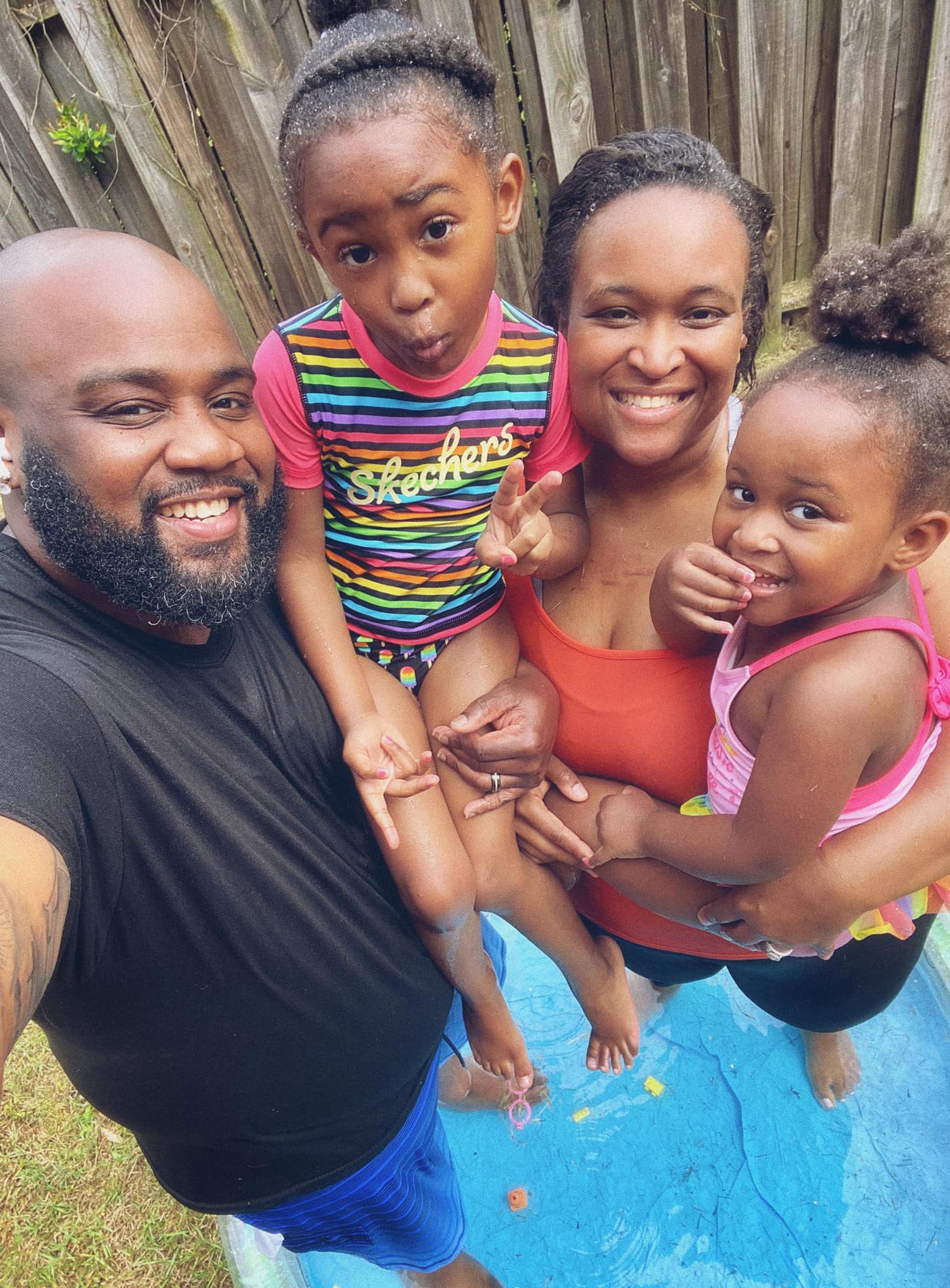
My daughters are the greatest blessings I have ever received, and I am so grateful to God that he has entrusted me to care for Mikayla and Mackenzie. I feel as though my journey was meant to help someone else, so my advice to others is not to give up. Keep the faith and hold on.The Mack family

For Mack to birth children, she would need to have a cerclage surgically placed. Cervical cerclage is a variety of procedures that use synthetic tape to reinforce the cervix during pregnancy in women with a history of a short cervix. It can cause serious side effects such as infections, bleeding, premature contractions or rupturing of the membranes.
“In 2014, I had a transvaginal cerclage, a nonsurgical incision that involves sewing the cervix shut, and was prescribed Letrozole fertility medication,” Mack said.
Letrozole is an oral drug that can effectively treat women suffering from infertility or those who have ovulation issues.
After having the transvaginal cerclage and being placed on Letrozole, Mack successfully conceived her first baby, Mikayla.
“During this pregnancy, my cervix still began to open early, so I was placed on bed rest at 16 weeks. At week 27, I went into labor. I was placed in the hospital, and the labor was stopped,” Mack said.
“The doctor stated that I would have to stay in the hospital until my due date. My baby was born through a cesarean birth, or C-section, at 30 weeks.”
Mack spent 33 days in the newborn intensive care unit prior to being released.
During her second pregnancy, she continued to have the same issue of her cervix opening too
early.
“Due to my cervix continuing to open early during pregnancy, I had to have a transabdominal cerclage for the second pregnancy in addition to the transvaginal cerclage I already had,” Mack said.
Transabdominal cerclage is when a small, strong woven synthetic band is stitched high on the cervix to prevent the expulsion of the fetus.
Because Mack had a transabdominal cerclage, she would never be able to conceive through vaginal birth.
Mack wants infertile women and couples suffering from infertility to know that any emotion they feel, such as anger, sadness, depression or anxiety, is normal.
“Through all these treatments, it was a very difficult experience,” Mack said. “I suffered four miscarriages and experienced many high and low emotions throughout the process. However, I want to encourage others to continue to fight and press on.”
Although Mack went through all those emotions, she never reached out for professional help or a therapist, which she now regrets.
“The only people who knew what I was going through were my parents, my pastor and a few family members,” she said. “My pastor was always checking on me and doing his best to encourage me, and my parents were doing the same. I am grateful for the small support system
that I had during this difficult time; it helped.”
Mack’s mom, Cynthia Rich, was present in the delivery room for both pregnancies.
“My daughter is a courageous woman and fighter. It was tough seeing her endure the illness, but as her mom, I couldn’t leave her side,” Rich said. “She needed me, and I’m so proud of the woman and mother she is today.”
Jeffery Rich, Mack’s father, stayed with her during the entire recovery period.
“As her father, I had to be there for my daughter. I can only imagine what she was going through. I honestly almost lost my mind, but we are a praying family. We prayed long and hard and continued to believe that God was able. Those prayers and unwavering faith grew the family stronger and closer.”
Mack is grateful for her parents, who supported her throughout her infertility journey.
“Having my parents present physically and spiritually meant everything to me. The experience was heartbreaking and emotional,” she said. “Miscarriages aren’t hereditary in our family. My mom never experienced this; it was new to the entire family.”
Mack added that her parents kept both of her children during the day until they were of age to attend school.
“I never had to pay for daycare. I always had a great support system when it came to my daughters. My parents are very involved in the life
of my daughters.”
Mack said having a support system is very important when you have children.
“Trying to do this alone can be so draining and stressful. Having a support team allows you to get some rest when you start to feel overwhelmed so that you can be the best person for yourself and your children.”

Today, at 40, Mack and her husband, Charles Mark, Jr., are the proud parents of two healthy girls, Mikayla, who is six, and Mackenzie, who is four.
“Becoming a mom has been both challenging and rewarding at the same time, but I would not trade it for anything. The journey that it took to make it to this point was well worth it, “Mack said.
“My daughters are the greatest blessings I have ever received, and I am so grateful to God that he has entrusted me to care for Mikayla and Mackenzie. I feel as though my journey was meant to help someone else, so my advice to others is not to give up. Keep the faith and hold on.”
Through all these treatments, it was a very difficult experience. I suffered four miscarriages and experienced many high and low emotions throughout the process. However, I want to encourage others to continue to fight and press on.
Breast cancer is the second most common cancer among women in the United States, according to the Centers for Disease Control and Prevention. Every year, more than 255,000 women are diagnosed with breast cancer. Unfortunately, 42,000 women fighting this battle die annually. Black women are impacted even more from breast cancer.
By Anika ThomasCarcinogenic compounds in plastic bottles and anti-anthrax vaccines can trigger breast cancer in female soldiers serving in the U.S. army. Polyethylene Terephthalate bottles can turn into major cancer-causing material with exposure to high temperature.
Lenore Waterman Jackson’s life turned upside down while serving in Iraq in the middle of the warzone. It all started with some unusual symptoms leading up to the most terrifying thing a person can hear. She was diagnosed with cancer.
“Imagine hearing this diagnosis while in Iraq. In the middle of hostile fire while wearing a helmet and a flack vest and carrying an M-16 rifle and an M-9 handgun. I was in the middle of battle and another battle was brewing inside of me,” Jackson said.

The unfortunate turn of events started with a vaccine that she received at the time when she was deployed in Belgium at a mail collection facility of the North Atlantic Treaty Organization (NATO). Due to standard operating procedure, she was vaccinated with an anti-anthrax vaccine because the mail collection centers were more exposed to anthrax than any other place.
During her deployment in Iraq is when she began having abnormal discharge, bleeding and excruciating pain in her breasts. She was given initial medical care in a Mobile Army Surgical Hospital (MASH) unit. The mission of the MASH unit is to triage and get the service members back to mission-ready status.
Jackson was in for a surprise the day she went to the medics.
While a heavy decision to make, once I had the surgery, I was told that I would be good. No more cancer. Not in remission. Just no more cancer. It was the best news I could ask for.

“I was immediately flown to Germany on a medivac helicopter, where I received my first diagnoses of breast cancer,” Jackson said. “Due to the circumstances, I was given two options, which were to remain in Germany and have a double mastectomy, recover and return to duty or go home. Of course, I went home.”
Two years later after doctors determined her cancer was Stage 1 and she received a good prognosis, Jackson made a lifechanging decision to have a double mastectomy.
“While a heavy decision to make, once I had the surgery, I was told that I would be good. No more cancer. Not in remission. Just no more cancer. It was the best news I could ask for,” she said.
She compromised one of her most precious body parts to win that battle against cancer. With a warrior spirit, she felt she had

defeated cancer. But the story of her plight does not end here. Cancer came back after four years in 2016, and this time with more vigor and intensity.
“I felt a lump in be right breast and for months, I ignored it. I didn’t think anything of it because I didn’t have any breasts. I resolved in my mind this was nothing to be worried about. But after the pain begain to worsen, I decided to go get checked.”
Jackson said that according to her oncologist, the recurrence of the disease was one of the rarest incidents to happen. But yet it was there, and this time, it was invasive and of Stage 2.
Jackson’s second encounter
with cancer was killing her as a woman because the cancer was being aggravated by hormones like progesterone and estrogen. It was a difficult war to fight, let alone winning. Jackson knew this time the battlefield was her body, and the battle was in her mind. She has to win this in her mind first in order to actually defeat cancer.
Jackson’s daughter, Kai E. Cobb, said her mother’s fight inspired and motivated her to reach her life goals.
“My mother’s strength taught me that I can accomplish anything with a positive attitude,” Cobb said. “Her spirit during her fight was inspiring. Her fight has shaped the way I view the world, and her
If you apply the statement, ‘you win it in your mind first,’ to the challenging things in your life, you will change your thoughts about how you will approach them. Cancer lost the battle against me two times. I am not a survivor; I’m a fighter.
strength has been transformative in shaping me as a person and an epidemiologist.”
Jackson recalls that while she was fighting for her life and looking for answers, Disabled American Veterans Charity, one of the nonprofit charities that provides a lifetime of support for veterans of all generations, found some answers.
An article published by Disabled American Veterans Charity in May 2016 shares the story of another war veteran’s plight and her research about what can be the underlying cause.
Dr. T. Danielle Russell, an Air Force servicewoman, said in her article that her research uncovered
connections of the plastic water bottles used by all U.S. personnel in Iraq to cancer. These bottles were made of polyethylene terephthalate (PETE or PET), containing a compound called carcinogenic.
These bottles, generally considered okay at moderate temperatures, traveled across Iraq for weeks in grueling heat. Dr. Russell further explained that when these bottles are exposed to heat, they can exhibit cancer-causing hormones.
In the article, Dr. T. Danielle Russell goes on to explain that there is also statistical evidence between receiving the full, 10 series, anthrax vaccination and the development of numerous cysts, especially breast
cancer.
Jackson’s battle with cancer was long and rigorous. She had to cope with cancer every single day, and her mantra was, “You win it in your mind first.”
During her second cancer journey, she decided to share it on social media to encourage and motivate others. She would regularly post quotes, thoughts and pictures from her chemotheraphy treatments.
“I took pictures with my family supporting me with my bald head. I even showed pictures of me having a pole dance with the monitor pole and several bags of chemotherapy medications. This was my way of coping,” Jackson said.
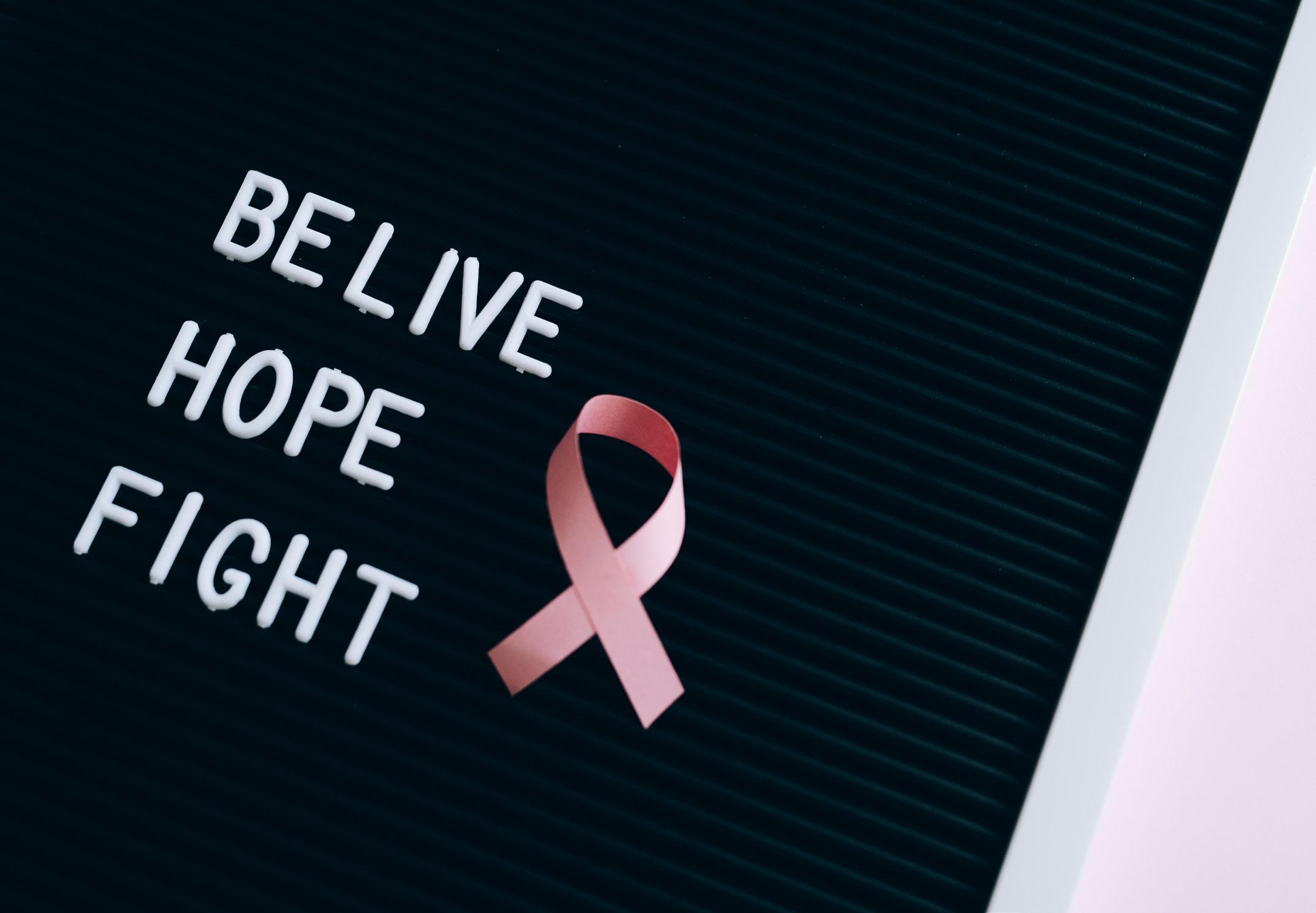
She wanted to make it seem like a piece of cake for those who were fighting the same battle. However, throughout her journey, she also had some very bad days when she would be angry, scared and wanted to give up.
“I cried. I screamed. I asked God, ‘why me.’ But I had far fewer of those days than I did of the days I posted about.”
Today, Jackson, a retired Air Force veteran, is still fighting. She still takes oral chemotheraphy.
“I am still a cancer patient, and I still believe, ‘you win it in your mind first.’ Every year, 255,000 cases of breast cancer are diagnosed in women compared to the 2,300 men. Forty-two thousand women fighting this battle die annually, and women who look like me, black women, are impacted harder than
our couterparts.”
Jackson added, “If you apply the statement, ‘you win it in your mind first,’ to the challenging things in your life, you will change your thoughts about how you will approach them. Cancer lost the battle against me two times. I am not a survivor; I’m a fighter.”
I am still a cancer patient, and I will believe, ‘you win it in your mind first.’ Every year, 225,000 cases of breast cancer are diagnosed in women compared to the 2,300 men. Forty-two thousand women fighting this battle die annually, and women who look like me, black women, are impacted harder than our counterparts.


It’s never too early to have a conversation about alcohol and other drugs.

The sooner you talk about the dangers of underage drinking and substance use, the greater chance you have of influencing your child’s decisions about using alcohol and other drugs. For tips on how—and when—to begin the conversation, visit www.underagedrinking.samhsa.gov


Exercise is crucial for maintaining good health and its importance increases further when you are trying to lose weight or maintain a healthy weight. Foods you eat have calories that are used for doing everything from sleeping, breathing, digesting food to doing rigorous exercise.

When you are trying to lose weight, doing more physical activity increases the number of calories your body uses for energy or “burn-offs.” Regular physical activity aids in controlling weight by using excess calories from the food eaten that would otherwise be stored as fat. Burning calories through physical activity, keeping a check of calorie intake through dieting or simply healthy eating helps in creating a calorie deficit necessary for weight loss.
Although extra pounds are shed because of the decreased intake of calories, research states that taking only the amount you can burn each day is one of the greatest strategies to maintain weight loss. Additionally, engaging in more physical activity will also assist.
Exercise not only helps in weight management but also reduces the risk of high blood pressure, heart disease, Type 2 diabetes, arthritis pain, several forms of cancer, osteoporosis by giving you stronger bones and depression and anxiety by enhancing mood. It keeps you active and makes it easy to do daily activities.
Here are some exercises for weight loss for women. Let’s have a look.
Losing belly fat is a problem that bothers many. In addition to eating a healthy diet, consider incorporating plant-based foods as well as more fruits and vegetables to assist with losing belly fat. Here are some simple and effective exercises to lose belly fat within no time.
Crunches rank on top when we talk of losing belly fat exercises. For doing crunches, lie down flat on the floor with your knees bent and feet at hip width apart. Place your hands under your head or crossed on your chest. Inhale and contract your abs, then exhale. Lift your head and shoulders off the mat or floor and keep them there for some time. Then slowly move back to your initial position and lie down on the floor. Repeat the cycle. This exercise is a good way to slim down as it works out the muscles in the stomach area and helps in burning belly fat.
Leg raises are great for the abs and the obliques. They aid you in building stronger abs, melting belly fat, increasing stability and strength and toning your body. Leg raises work for toning your stomach by completely isolating the rectus abdominis muscle. For doing vertical leg raises, lie down on your back with your palms under your hips. Slowly lift your legs to a
90-degree angle. Knees should be straight and feet should be pointing towards the roof. Pause in this state for a minute. Lower your legs back down while exhaling out.
Losing belly fat is necessary for maintaining a toned body with a healthy weight and decreasing the negative impact of belly fat on health. Crunches and vertical leg raises are good exercises for melting belly fat. Walking, cycling


When you are trying to lose weight, doing more physical activity increases the number of calories your body uses for energy or “burn-offs.”Vertical Leg Raises Crunches
and aerobics are also effective ways for this purpose and gives a positive effect on the heart rate.
Is a sculpted, toned booty on your wish list? Completing targeted glute exercises two to three times a week is the key to lifting, toning and shaping your butt. Let’s learn some of the best simple moves to sculpt your lower body and have a beautiful and strong backside.

For doing this exercise, hold a 15-pound dumbbell or kettlebell in front of you. Keep your feet wider than hip-width. Squat down and back and touch elbows to knees. For doing this step, imagine there is a chair behind you and try to keep your thighs parallel to the ground while driving your weight into your heels. Go back to the standing position as you raise the weight up and overhead. Repeat this exercise 15 times. It sculpts the back of your thighs while lifting and toning the butt.
Start this exercise in a tabletop position on your knees with forearms down. Lift your right leg straight back with your foot pointing towards the sky. Bring it back to the starting position. Repeat 20 times on each leg side. This exercise is great for lifting the lower body and toning the thighs.
These moves will burn many
calories. Working on lower body muscles, such as the butt and legs, uses more energy and helps in shedding fat from head to toe. Try these exercises and get ready for your toned, sculpted buns. Looking for something more for your buttocks and thighs, research and learn weighted donkey kicks,
one-legged bridge and mini band knee openers.
Reducing arm fat is not as easy as just controlling your diet. Exercises that tone and strengthen the back, upper arms, chest and shoulders help to sculpt this
area. Let’s learn some of the easy exercises you can do for reducing flabby arms.
For weightlifting, you need a standard pair of weights. You can also use a water bottle if you don’t have dumbbells. Stand with your feet shoulder-width apart and hold the weight with both your hands. Lift it above your head and keep your arms straight. Then lower the weight behind your back and hold it there for a couple of seconds. Take the weight again above your head and repeat the cycle. During this exercise, keep your arms as close as possible to the ears. Doing three sets of 20 reps each is a good workout. You can rest for a minute in between.
Scissors is an easy exercise and needs no weights. Having a yoga mat and enough space to move hands works well for doing it. On the mat, stand with your legs apart. Extend your arms toward your sides while keeping them straight. Then, bring them toward the front of your body and cross them in a way that they overlap. Return to the initial position. Repeat this process daily for about 20 minutes for the best results.
Weightlifting and scissors are good exercises for reducing arm fat. If you are interested in some other exercises for losing arm fat, look for side planks with dumbbell raises, push-ups, bicep
curls, tricep dips, seated row, triceps press down, bench dip, chest press, triceps extension, tricep press, downward-facing dog and cat-cow. A healthy diet, along with regularly doing these exercises that include both strength training and cardiovascular, will help in losing underarm fat by reducing overall
body fat.
Who doesn’t like a well-toned body? Read on to know some of the exercises you can do for toning and tightening your body.

Push-ups work for every part of your body. For doing push-ups, get down on all fours, placing your hands slightly wider than your shoulders. Straighten your legs and arms. Start lowering your body until your chest nearly touches the floor. Stay like this for a while and then push yourself back up. Doing three sets of 12 up to three times per week is a good start.

This exercise gives you a great full-body stretch as it works out your core, gluteus maximus, shoulders and upper legs. For doing this, bend forward while keeping your back straight. Reach one arm down and the other arm up, and along with that, twist your spine.
Push-ups and bending windmill stretches are great for giving you a toned body. A well-toned body also helps in maintaining good posture. Interested to know more of the exercises for toning your body, look for lunges, squats, dumbbell rows, 180 jumps, sit-ups, arm raises and abdominal stretches as they all work in this regard.
Exercise is the ultimate form of self-care and is a must for reducing excess weight and maintaining a healthy weight. Different exercises work for losing belly fat, sculpting buttocks and thighs, getting rid of arm fat and overall toning of the body that all boost your weight loss efforts. One most important thing here is that you choose an exercise that you enjoy doing to
keep consistent in your routine and get the desired results. Break the exercises over the whole week; you don’t have to do them all at once. Each week, aim for at least 150 minutes of moderateintensity aerobic exercise. You can increase according to your requirement and body status. Before starting the exercises, consult your doctor if you have health concerns like shortness of breath, dizziness, an irregular heartbeat, blood clots, joint swelling, hernia, chest pain or recent hip or back surgery. If you aren’t used to the energetic activity and you want to start a vigorous exercise, you may talk to your doctor to know of any safety tips while doing the exercises. Getting fit is never too complicated. You don’t need to go to the gym or get fancy workout equipment, just some dumbbells and a healthy dose of motivation are enough to keep on track. Start exercising today and enjoy a healthy life.
This content is only general information and does not substitute for a qualified medical opinion. Always consult your doctor or a specialist for any further information.
“Being physically active can improve your brain health, help manage weight, reduce the risk of disease, strengthen bones and muscles and improve your ability to do everyday activities.” - CDC

Obesity is a medical condition that can compromise your quality of life. It can increase the risk of heart diseases, certain cancers, diabetes, sleep apnea, digestive problems, osteoarthritis, gynecological and sexual problems, high blood pressure, depression and social isolation. According to the Centers for Disease Control and Prevention, a person with a BMI above 30 is considered obese.
Obesity is becoming more prevalent, and its related health conditions are among the leading causes of death. The 2017-2018 estimates of the CDC found 42.4 percent of U.S. adults are obese, and according to the World Health Organization, worldwide, 650 million adults were obese in 2016. The main contributing factors causing obesity are genetics, sedentary lifestyle choices, overeating, not having enough knowledge of healthy foods, certain diseases such as Cushing’s Syndrome, medications such as antidepressants, disturbed sleep and hormones, unhealthy cooking practices and stress.
LOSING WEIGHT
Some simple dietary and lifestyle
Losing weight and maintaining a healthy one is crucial for good health. No quick fixes are going to help you with long-term weight management. Eat right, exercise, sleep well and de-stress are key to a fit, healthy life with a well-managed weight.
modifications will help you lose pounds. It is recommended that you focus on a healthy, steady weight loss of one to two pounds per week for effective long-term weight management rather than unhealthy fast plans that do not work in the long run. Below are some healthy ways to lose weight and maintain it.

Develop a healthy relationship with food as diet plays an important role in keeping your weight under control. These small changes can help shed extra pounds and having a healthy weight.
Limit refined carbs. Cut back on starches, sugars and highly processed carbs like white bread and white pasta. Instead of highsugar snacks and drinks, opt for healthy options like herbal teas, fruit-infused water or vegetable juice.
Include whole foods with more fiber. Have minimally processed
whole grains, beans and legumes, nuts and seeds, fruits and veggies. These are high-fiber, nutrient-rich foods that give you a full feeling, curb your appetite, reduce your insulin levels and help in eating fewer calories.
Swap unhealthy fats with healthy ones. Limit unhealthy fats from processed, fried foods, butter, spreads, dips, mayo and creams. Healthy unsaturated fats such as avocado oil, olive oil, sunflower oil, rapeseed oil and seeds are good
choices. They will keep you full, help with weight control, manage your mood, fight fatigue and add quality to your diet.
Have a balanced diet with reduced calories. Go for a balanced diet with all healthy food options but controlled portion sizes. Different apps can tell you the required calories for weight loss based on your sex, height, weight and activity levels.
Keep a food diary. Tracking your diet helps you stay motivated
to choose healthily and avoid unnecessary munching and overeating. Apps like MyFitnessPal are available to record what you eat and exercise. According to a study, those who note everything they eat are likely to lose weight more easily.

Eat mindfully. Remove any distractions when you eat and pay attention to your food only to enjoy it fully. It takes some time for the signal to reach your brain that you have had enough. Some tips for mindful eating are sitting down to eat or switching off your phone, television and laptop while eating.
Don’t skip breakfast . A balanced, filling breakfast helps stabilize blood sugar and keeps hunger under control. Having food during the early hours gives more time for utilizing calories throughout the day. Breakfast-goers perform better at work and have a
lower body mass index than those who skip it.
Have proteins in breakfast. Protein is necessary for preserving your health and muscle mass along with losing weight. It regulates the appetite hormones to make you feel full and reduce the desire to snack. Good protein choices include oats, eggs, nuts, beans, legumes, Greek yogurt, sardines, quinoa porridge and chia seed pudding. Balance your gut bacteria. Gut bacteria is influenced by what you eat and contributes to weight gain or loss. Work on enhancing function of good bacteria and inhibiting bad bacteria for better metabolism. Some foods for achieving this goal are a wide variety of plant foods such as fruits, veggies, and whole grains, and fermented foods such as kefir, yogurt, sauerkraut, tempeh, kimchi and miso. Studies have
found that kimchi has anti-obesity effects, and kefir also helps with promoting weight loss in overweight women.
Stay hydrated and take water before meals. According to a study, having water before meals reduces the calories taken and may be effective for losing weight. Staying hydrated is also important to keep you feeling full and reduce bloating. Sometimes people confuse thirst with hunger and consume extra calories when they need a glass of water.
Have green tea. This can boost your metabolism through the phytochemical catechin in it. You can also have black coffee or black tea. The caffeine in them also increases metabolism, which helps with weight loss, but the best effective option is green tea. Limit alcohol. Alcohol has more
calories per gram than protein or carbs and can suppress fat metabolism making it hard to burn calories. It can also take you to a state of mind where your motivation for weight loss weakens, and you can mindlessly have unhealthy foods that you are trying to limit.
Plan your meals. Making a healthy menu and stocking the kitchen with required healthy ingredients and no unhealthy options can save you from going for something unhealthy at mealtime.
Exercise is crucial for maintaining good health. It boosts your metabolism even when you are resting and increases the number of calories your body uses for energy. Different exercises work to lose belly fat, sculpt buttocks and thighs, get rid of arm fat and improve the overall toning of the body.
Poor quality or insufficient sleep slows down the process of metabolism and increases insulin and cortisol production. It also affects the appetite-controlling hormones to make you eat more and influences your food choices. According to a study at the University of Michigan, sleeping an extra hour a night could help you drop 14 pounds in a year.
When you are constantly under stress, increased cortisol in the blood increases your appetite,
leading to emotional eating. A stress-management intervention program can result in a significant reduction in the BMI of overweight and obese children and adolescents. You can engage in yoga, meditation, breathing or relaxation techniques to reduce stress.
Losing weight and maintaining a healthy one is crucial for good health. No quick fixes are going to help you with long-term weight management. Eat right, exercise, sleep well and de-stress are key to a fit, healthy life with a well-managed weight.

This content is only general information and does not substitute for a qualified medical opinion. Always consult your doctor or a specialist for any further information.

